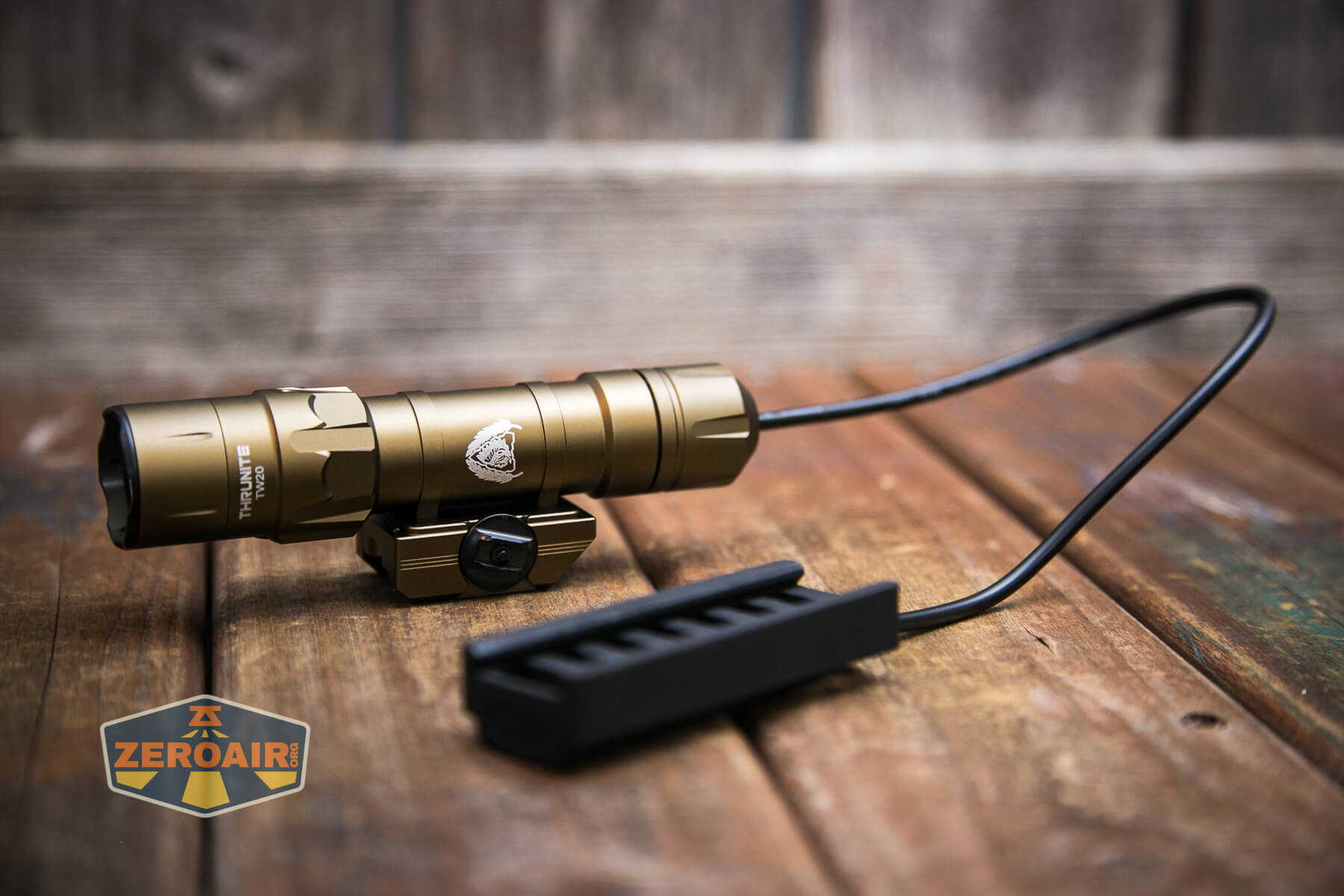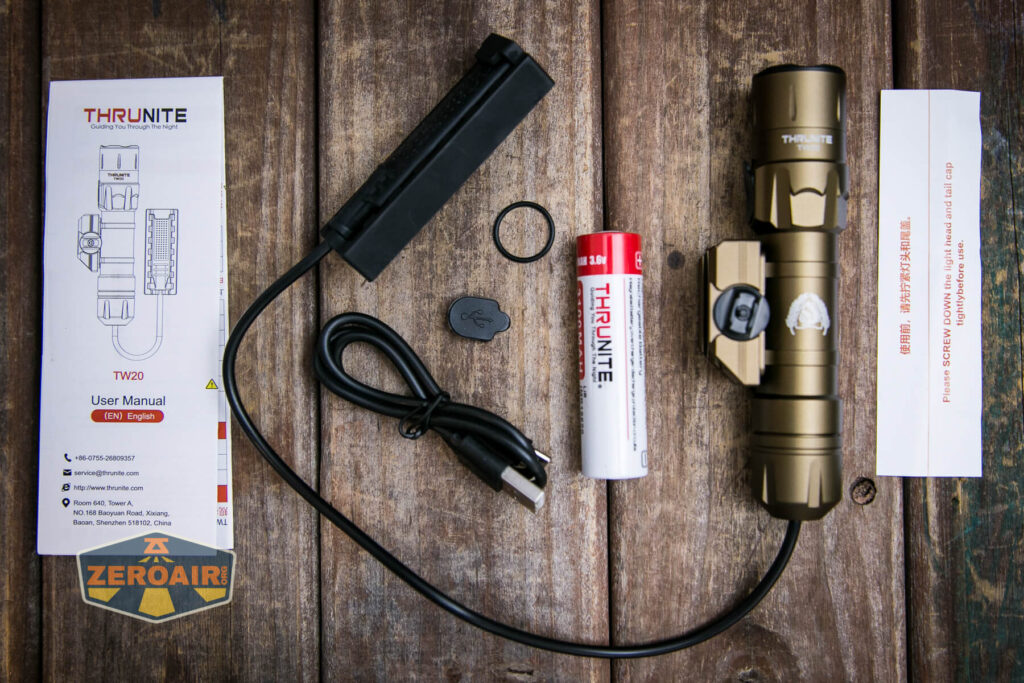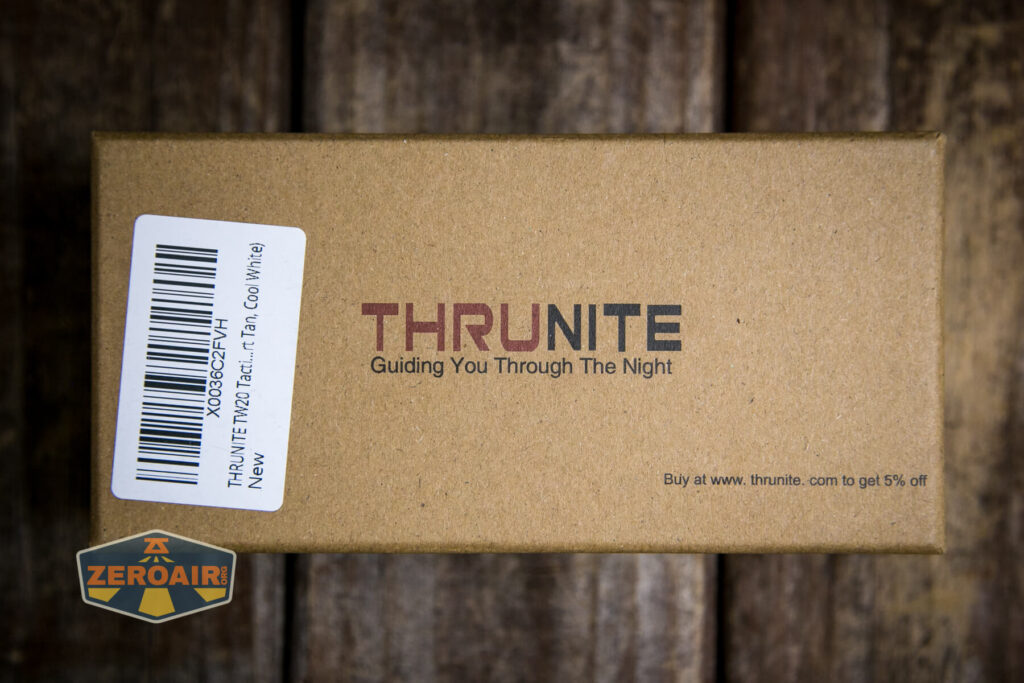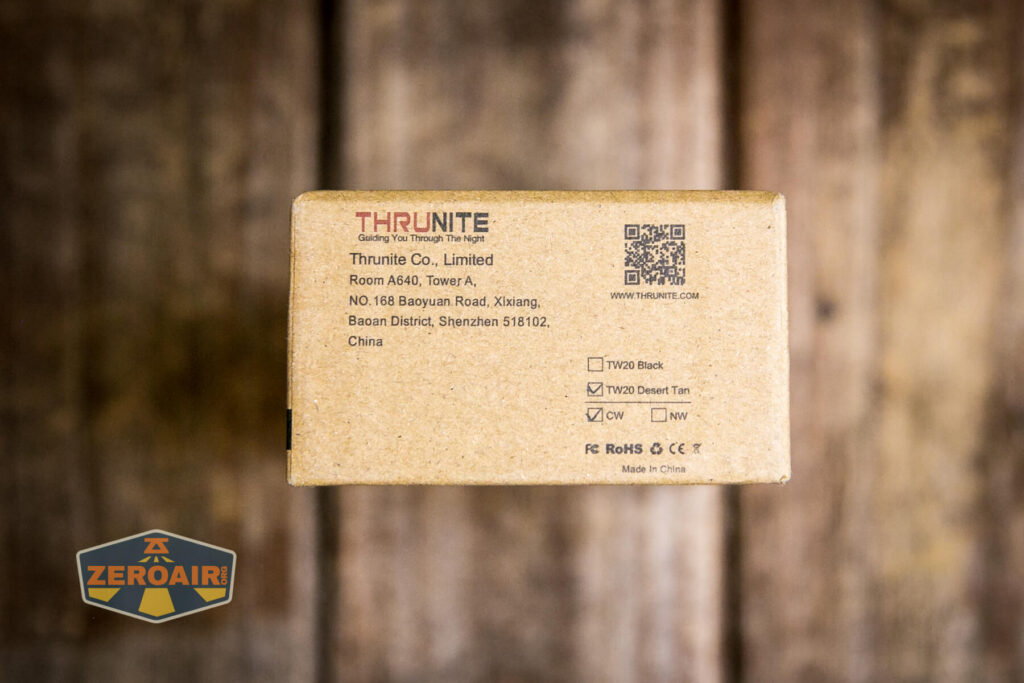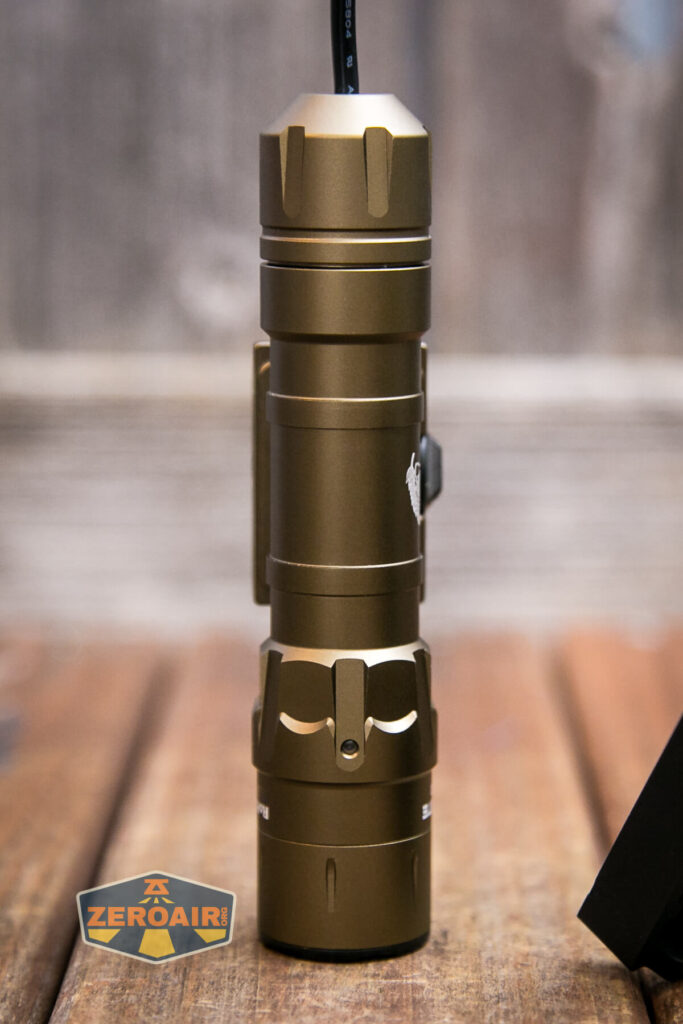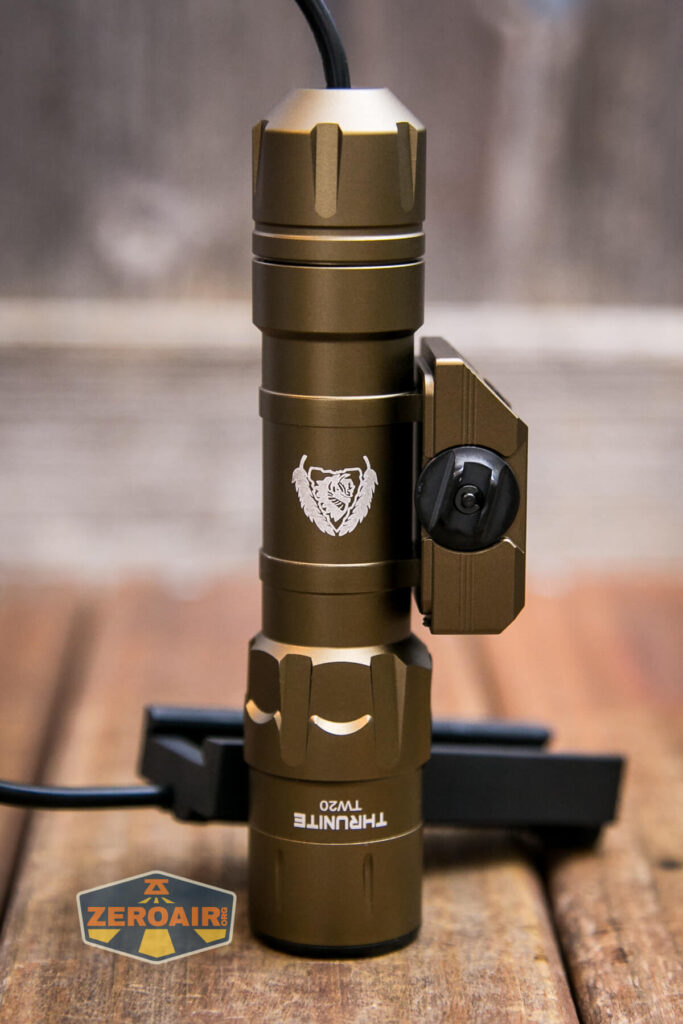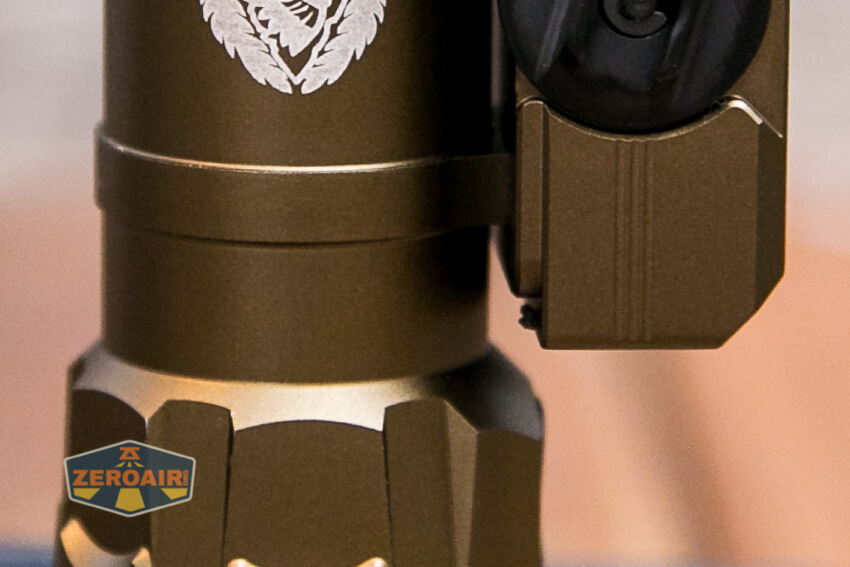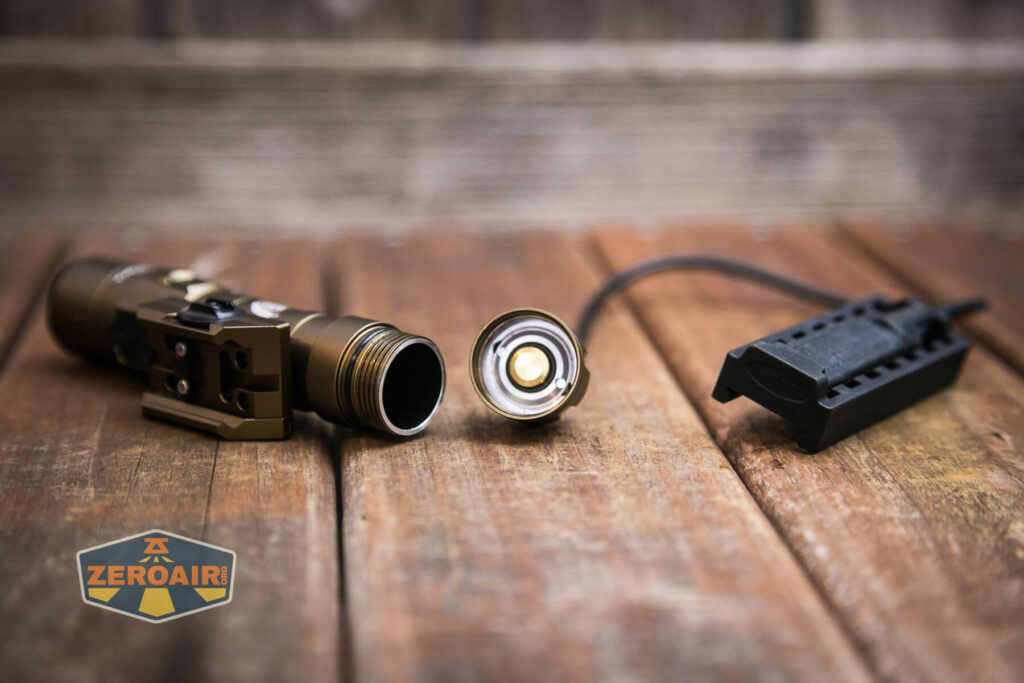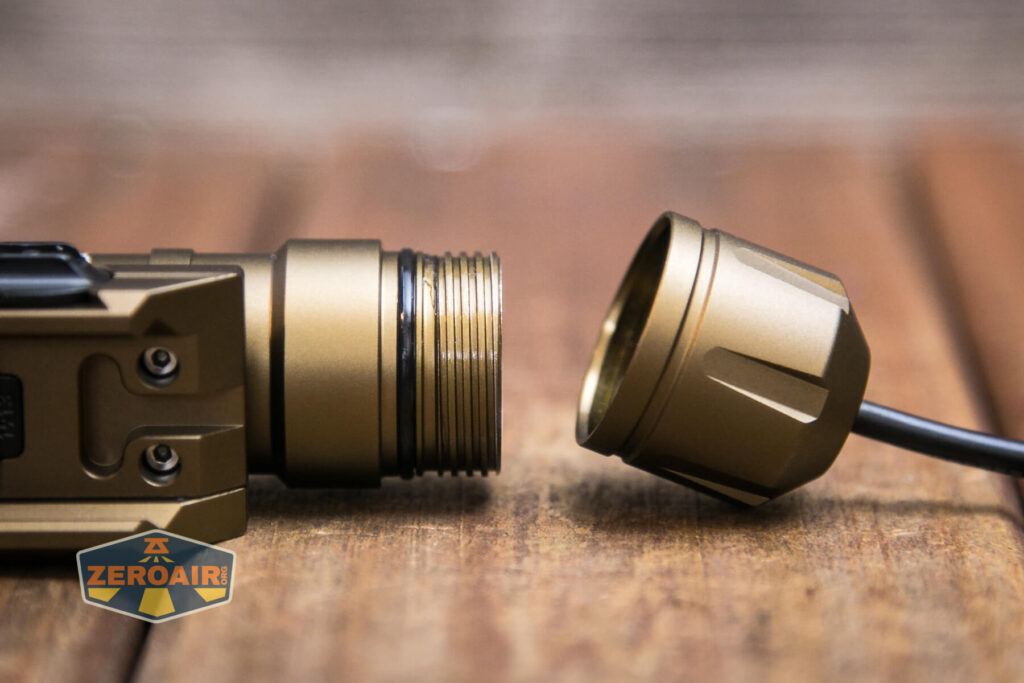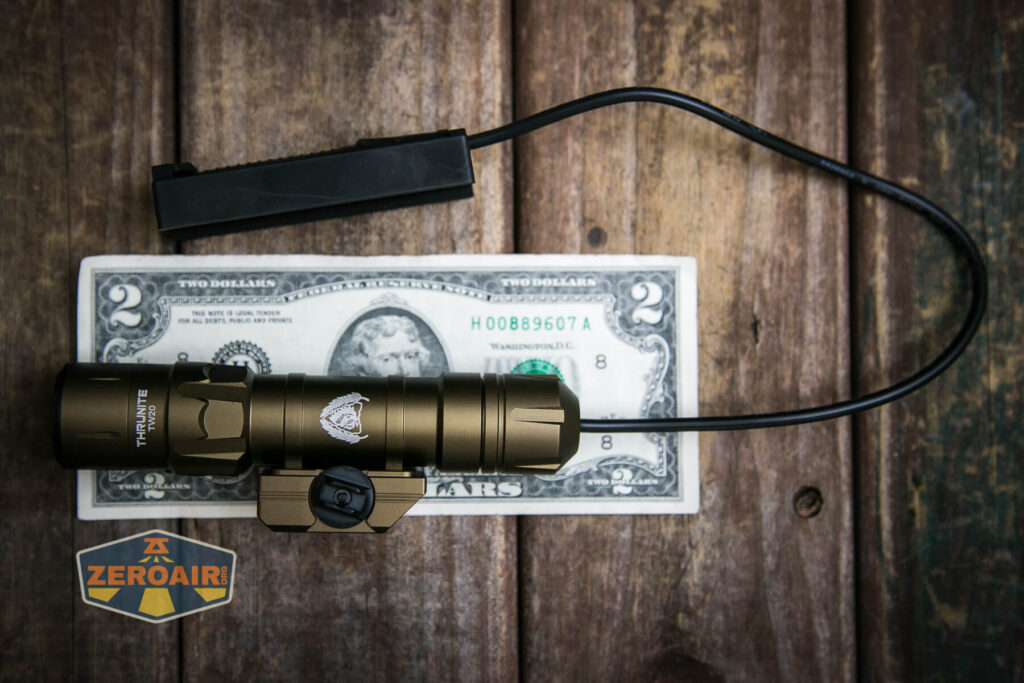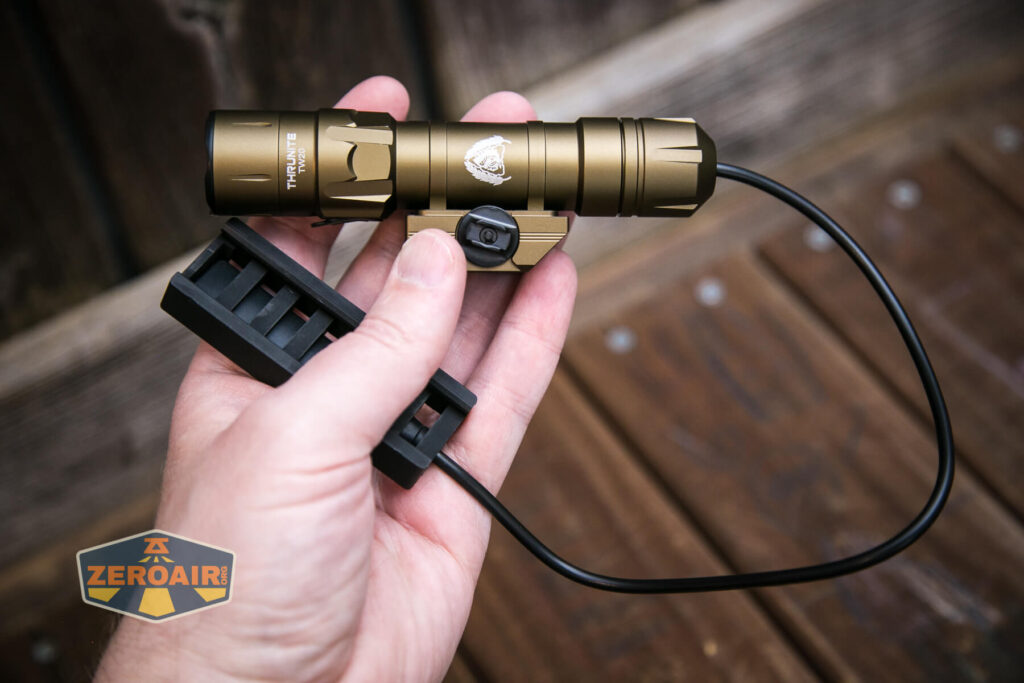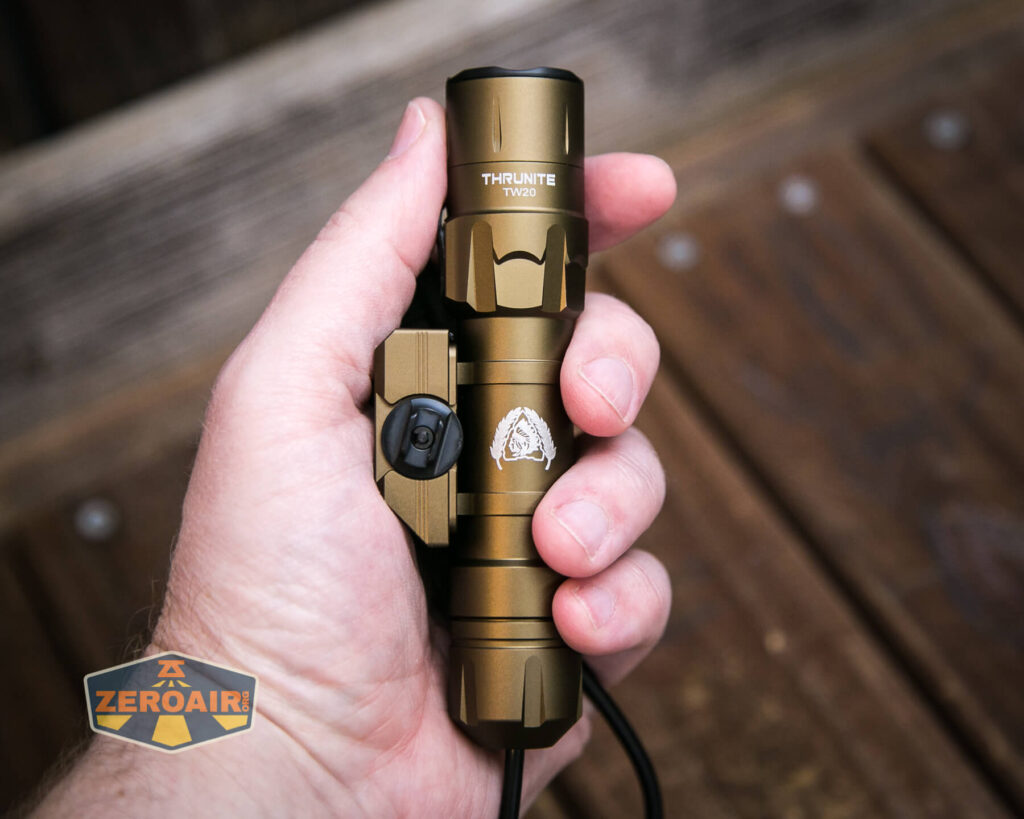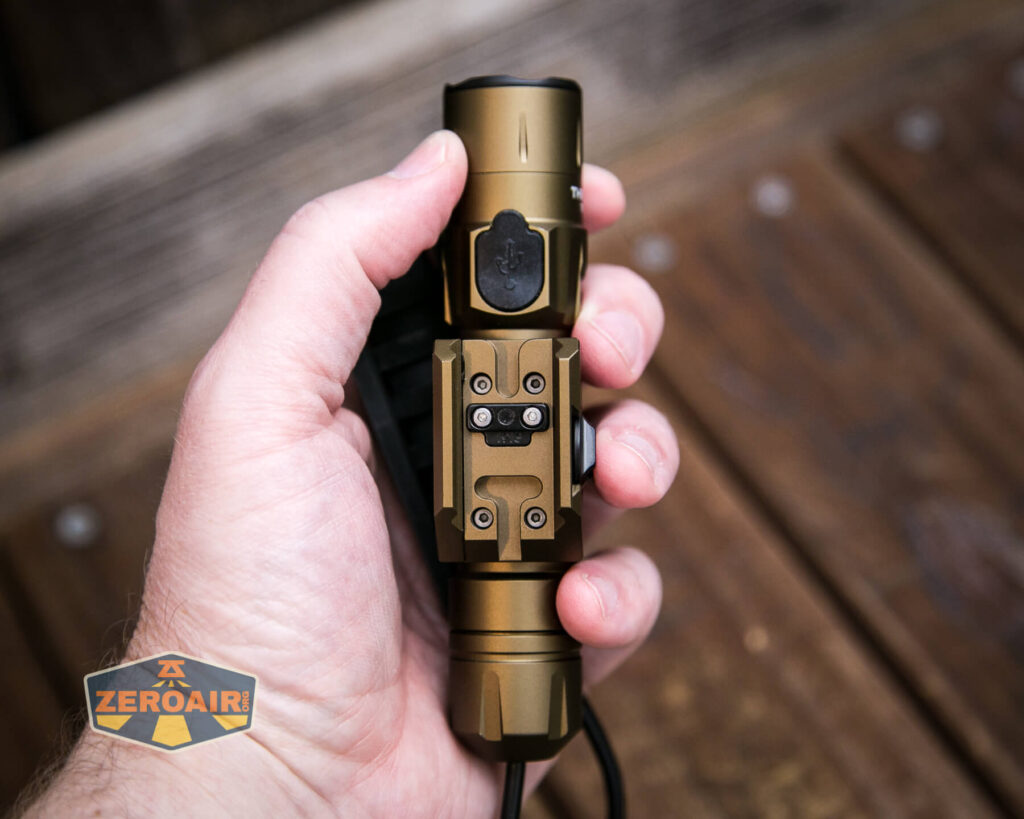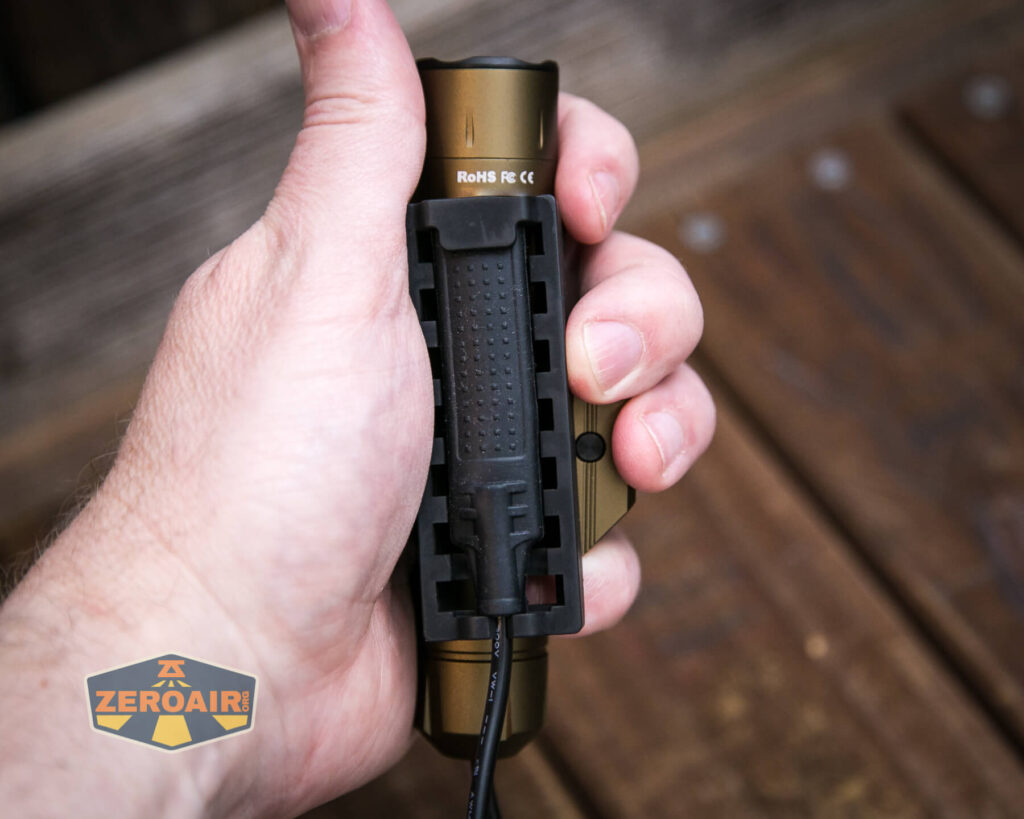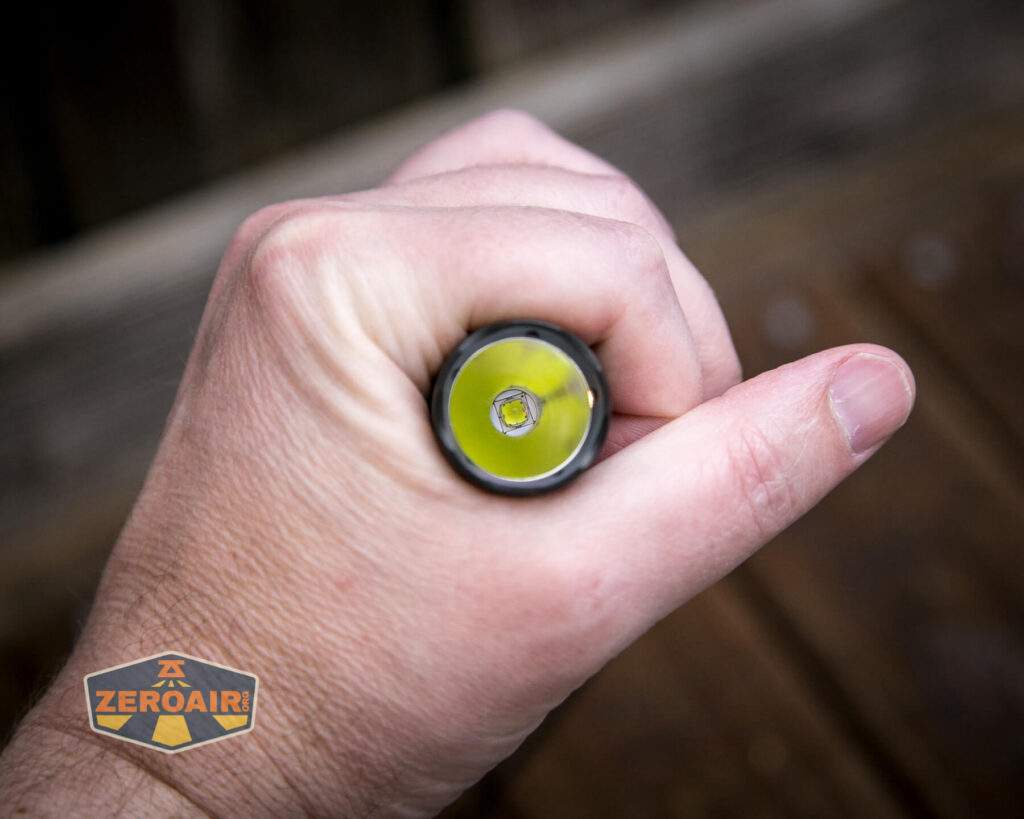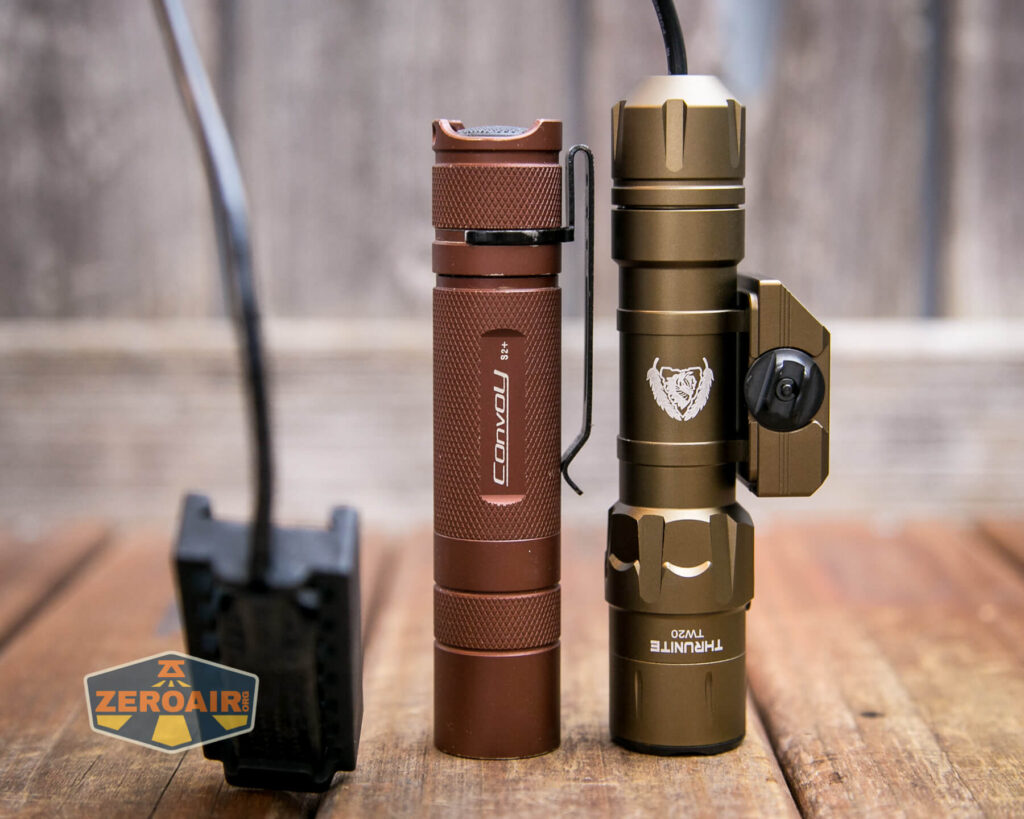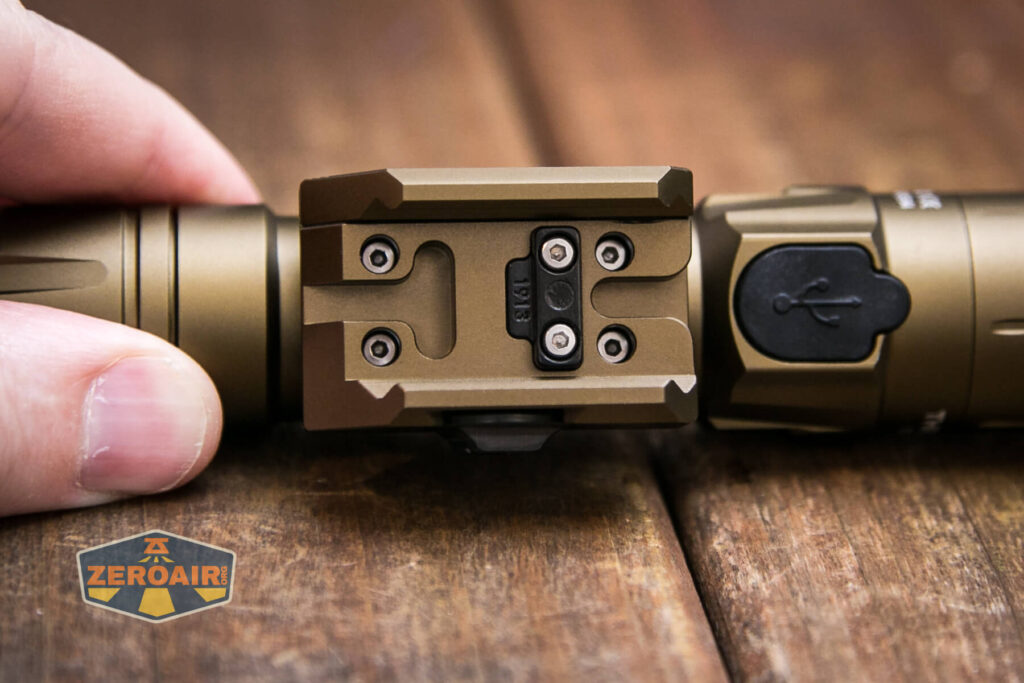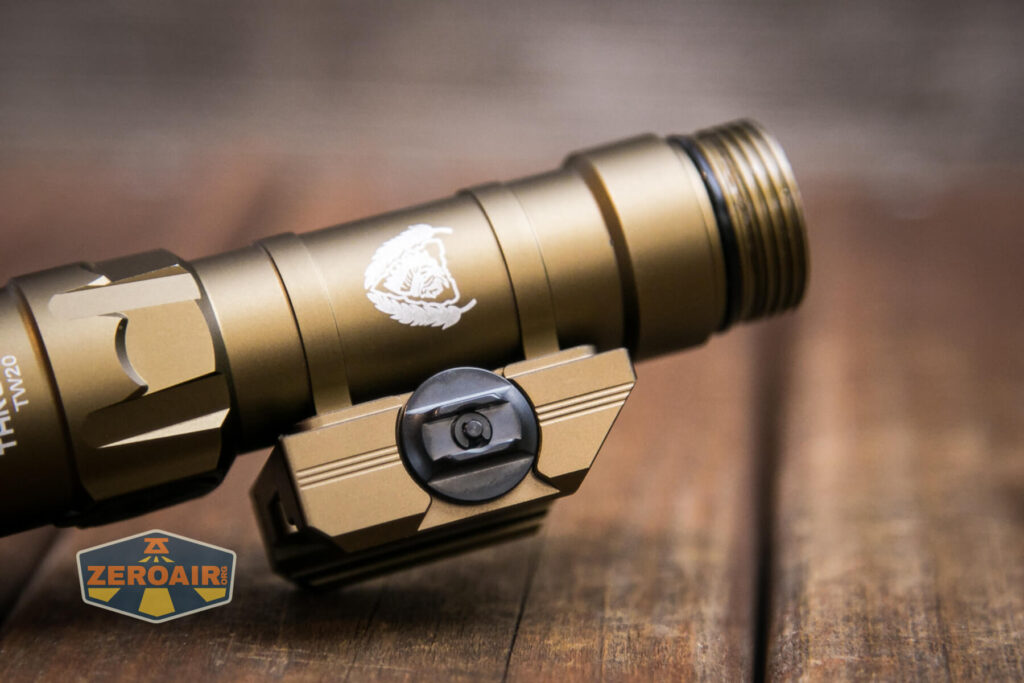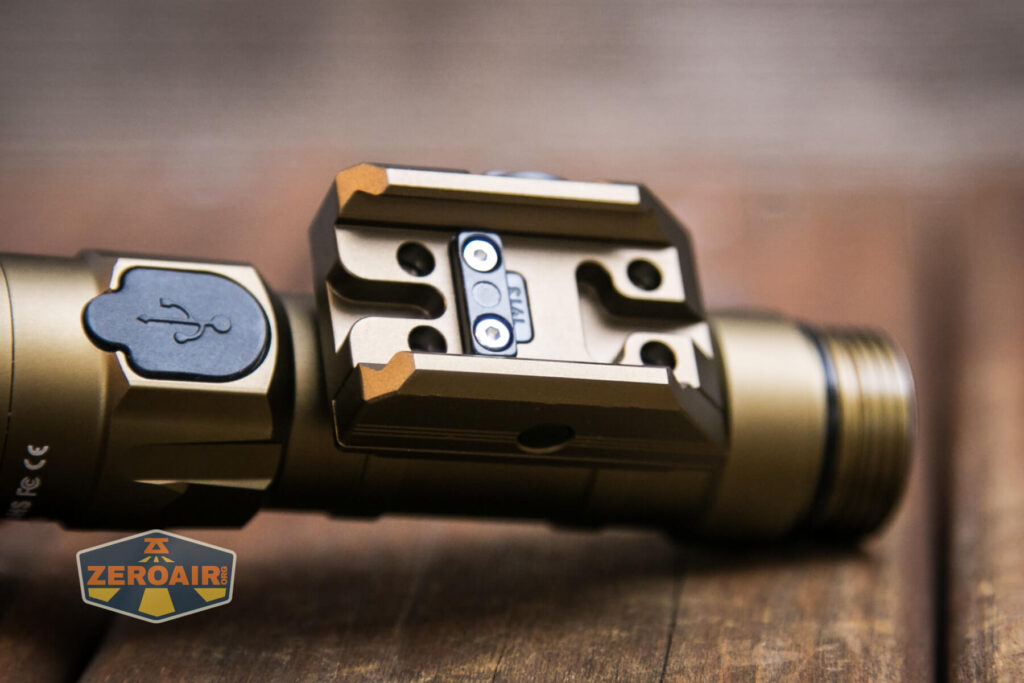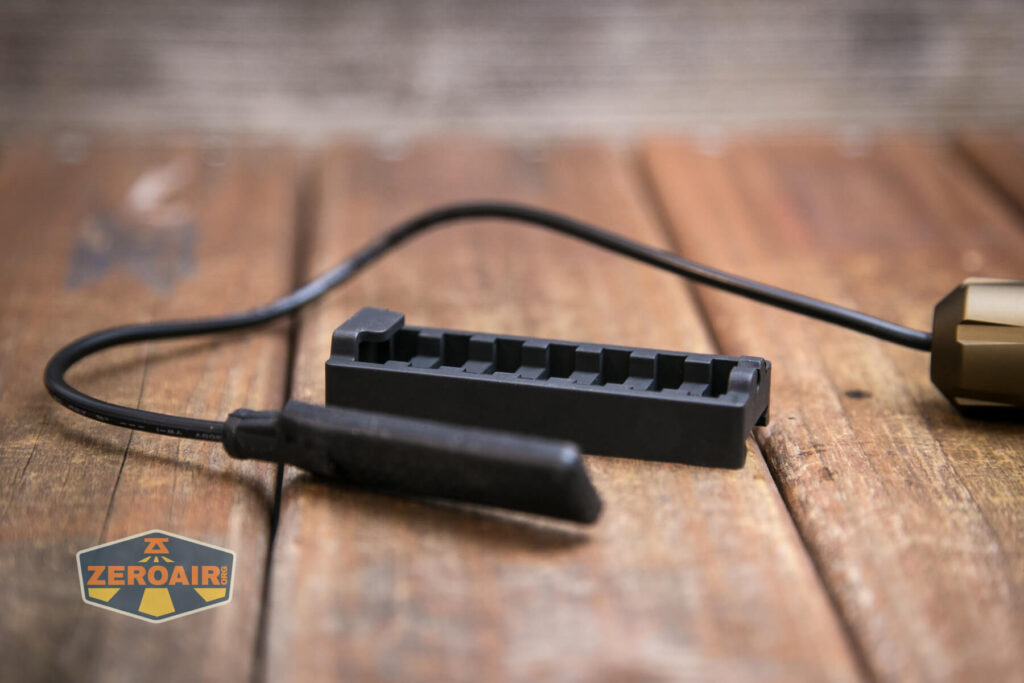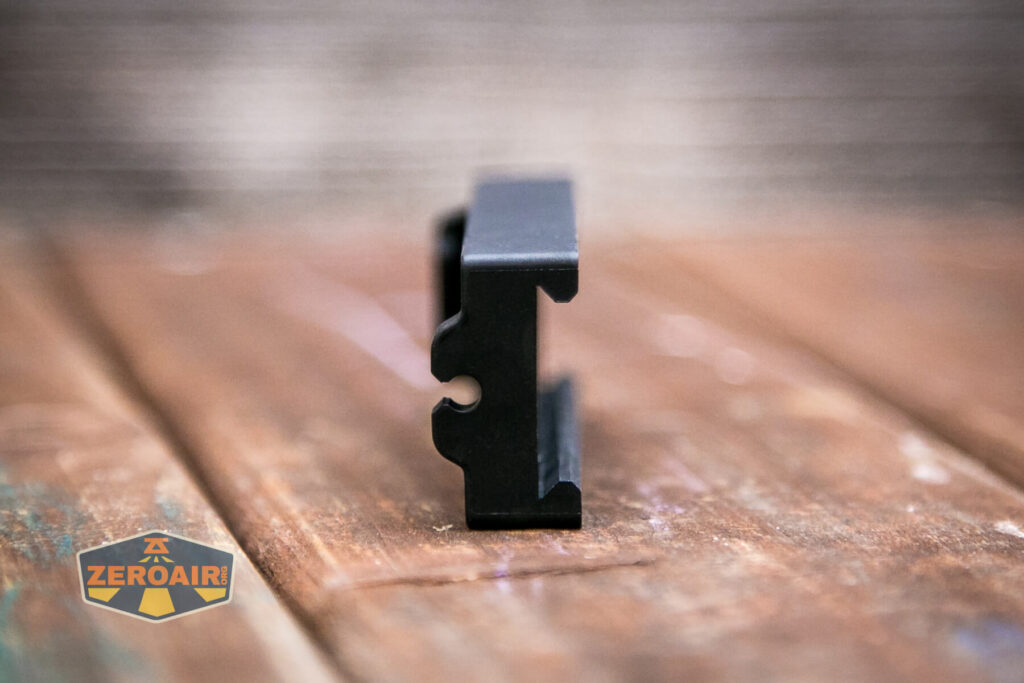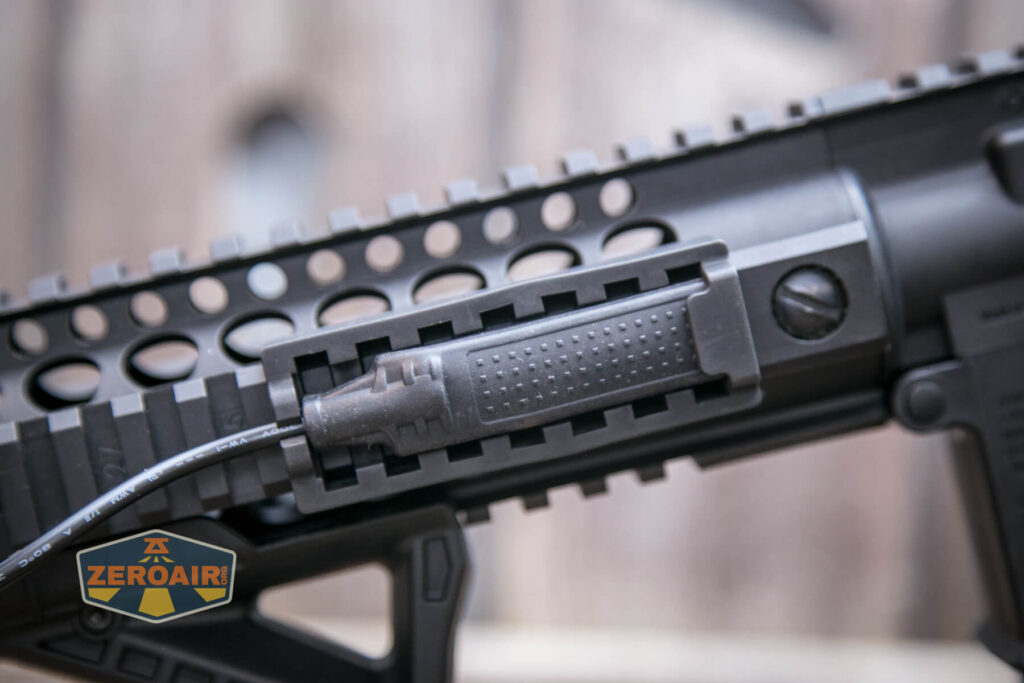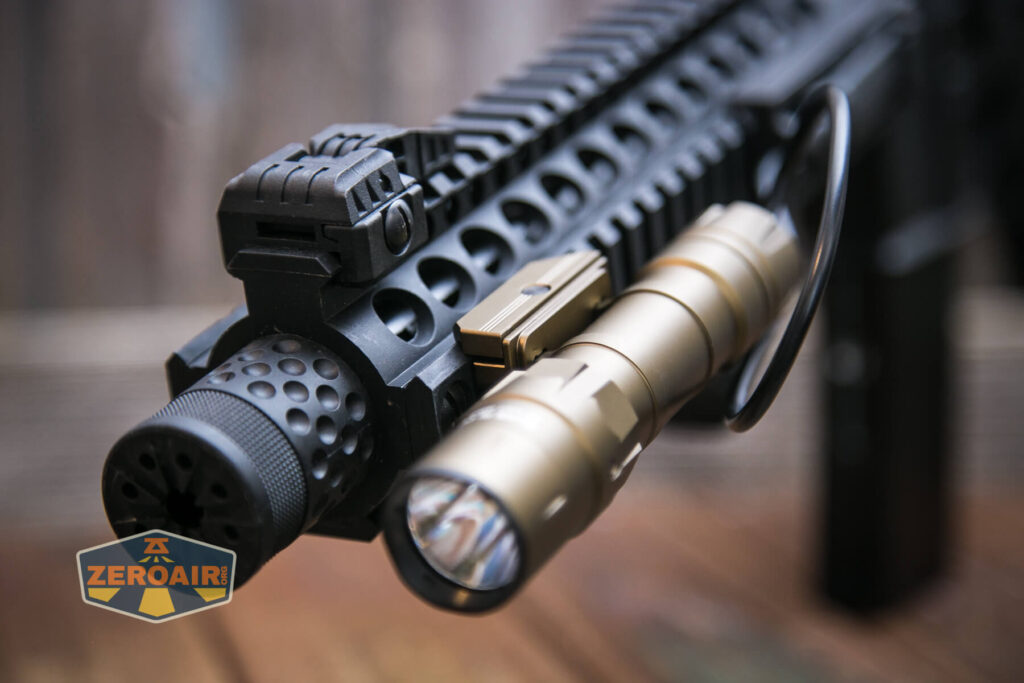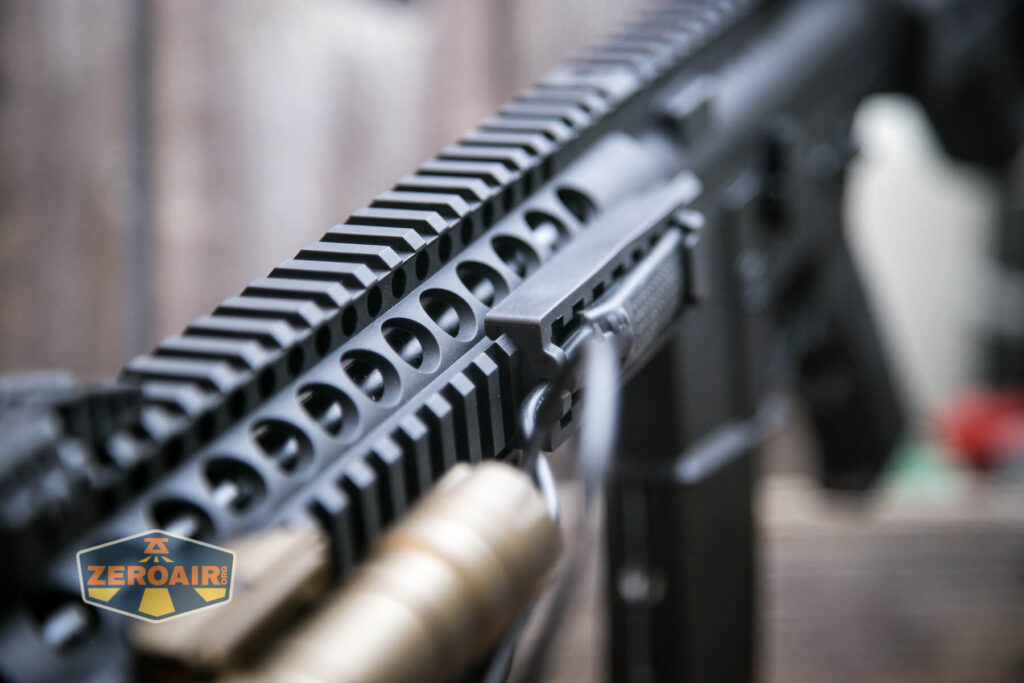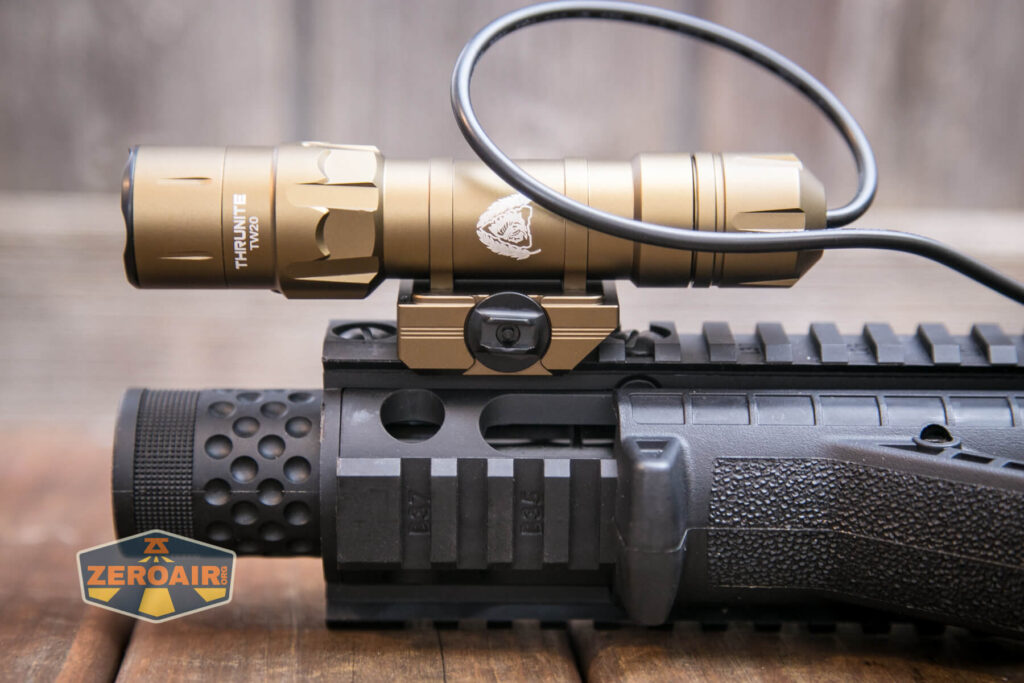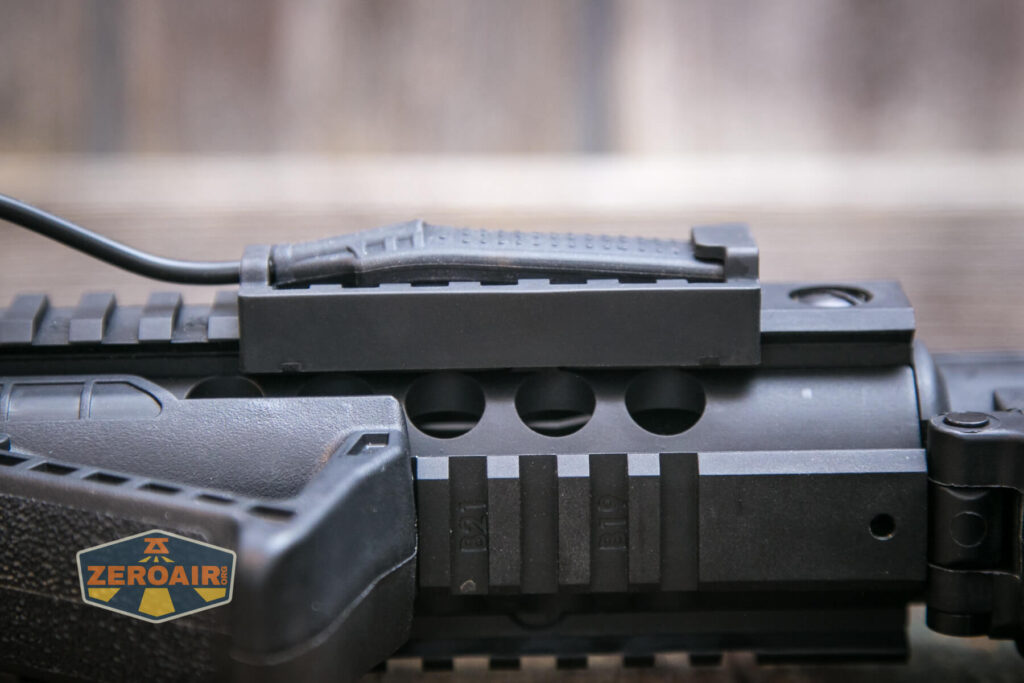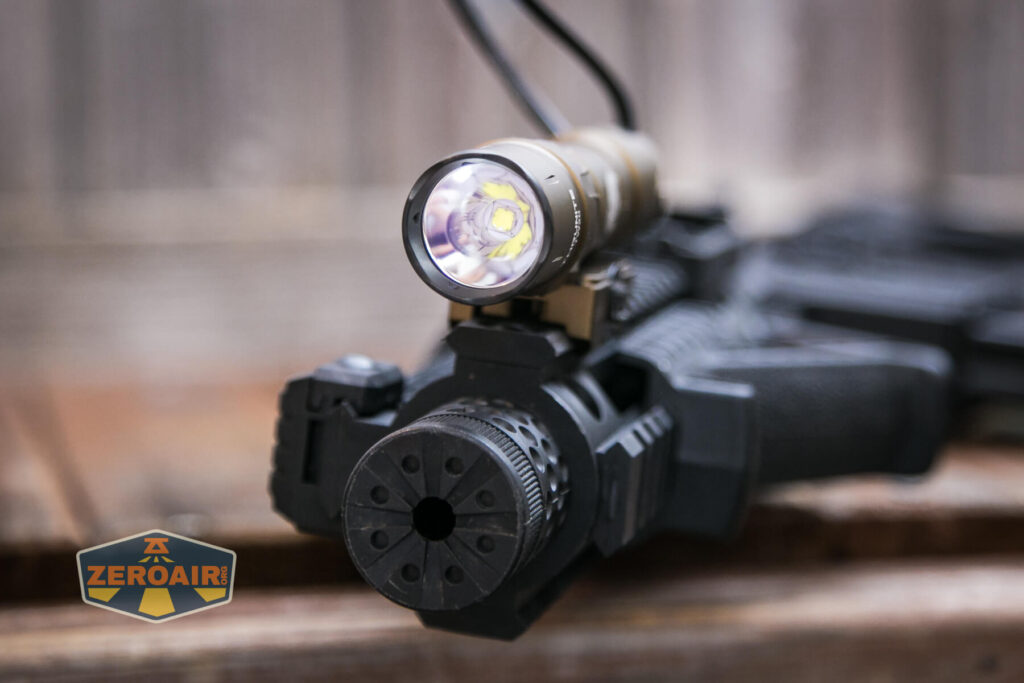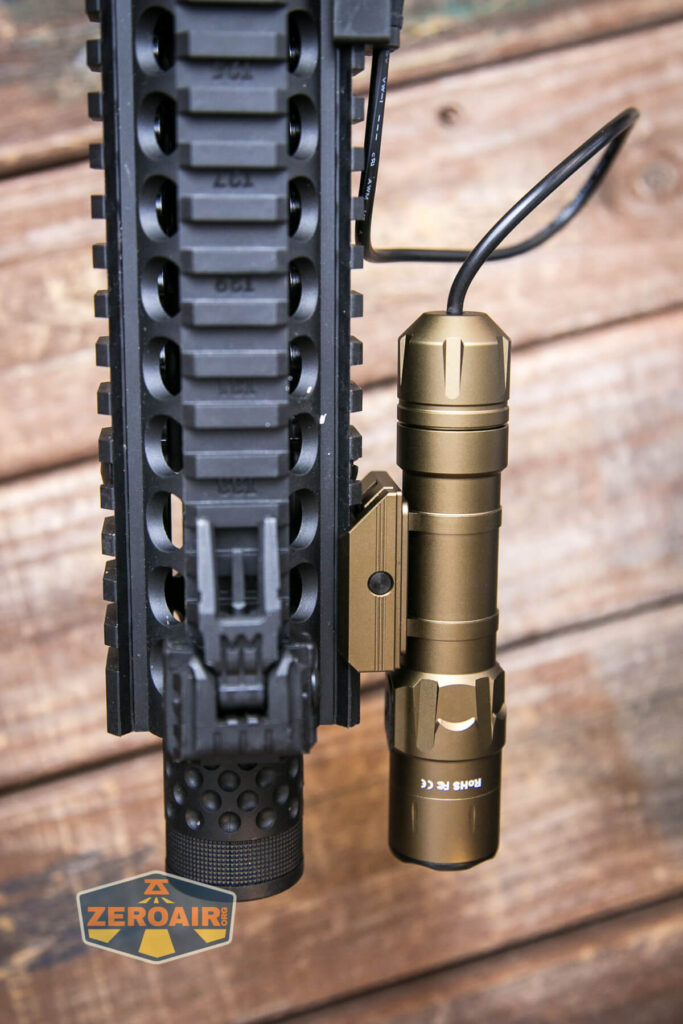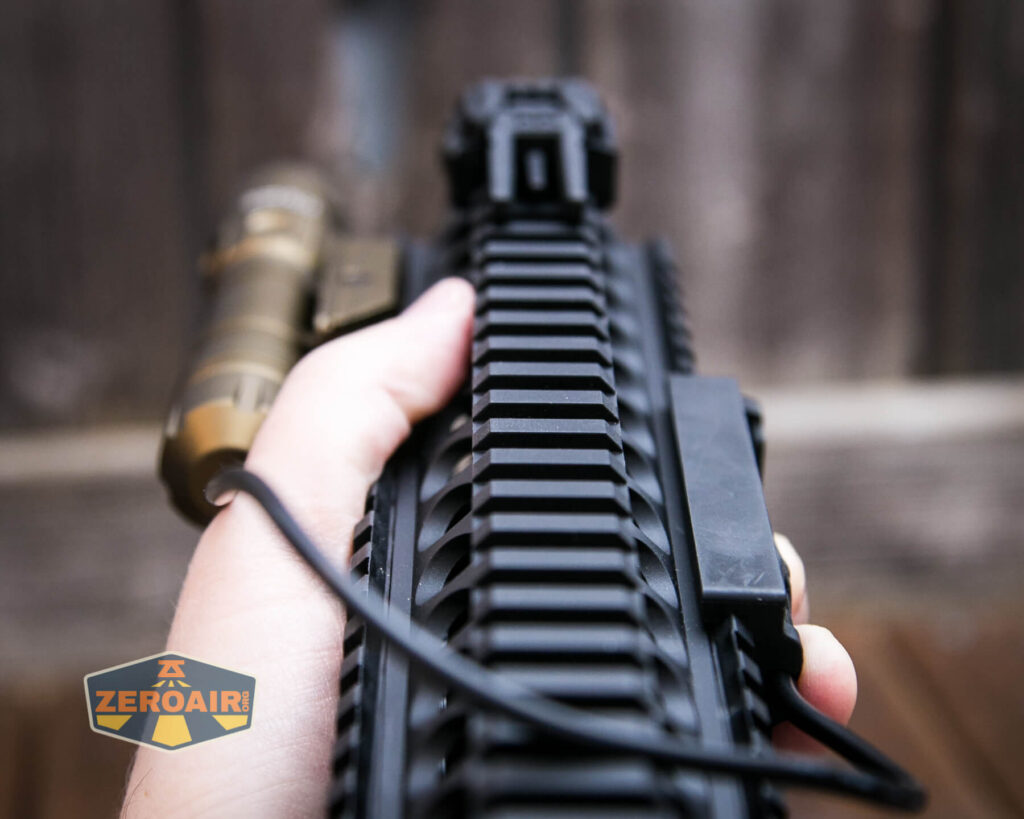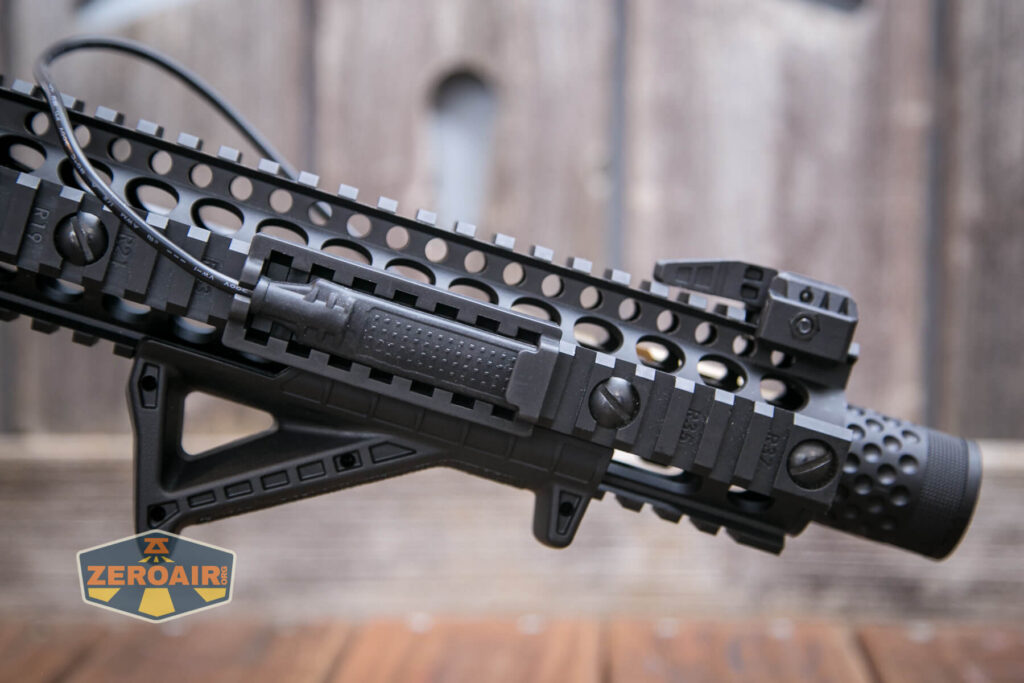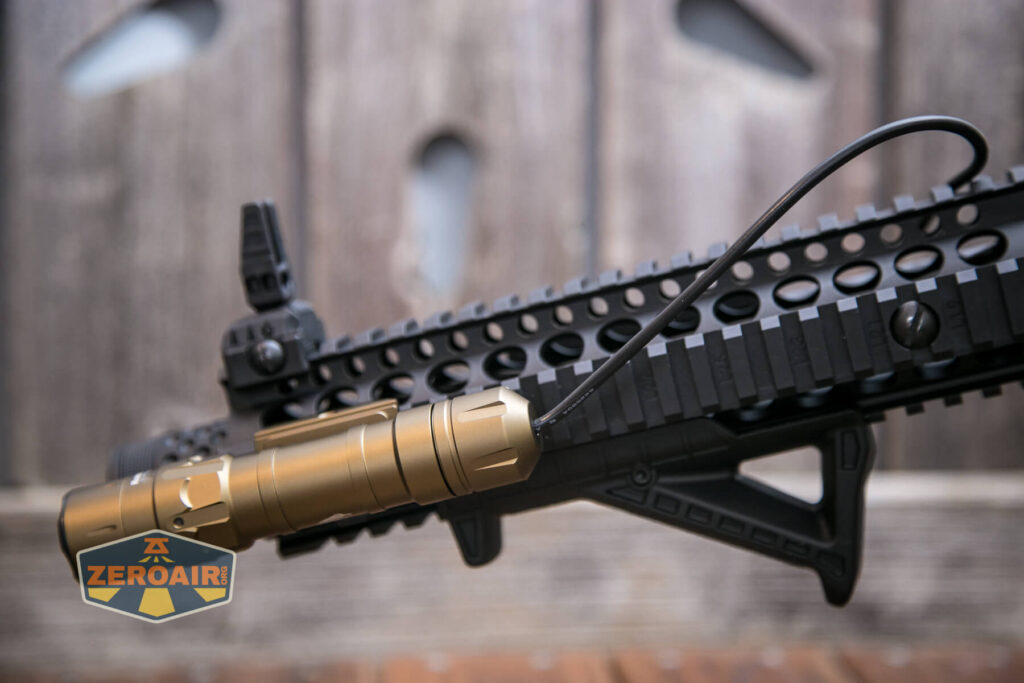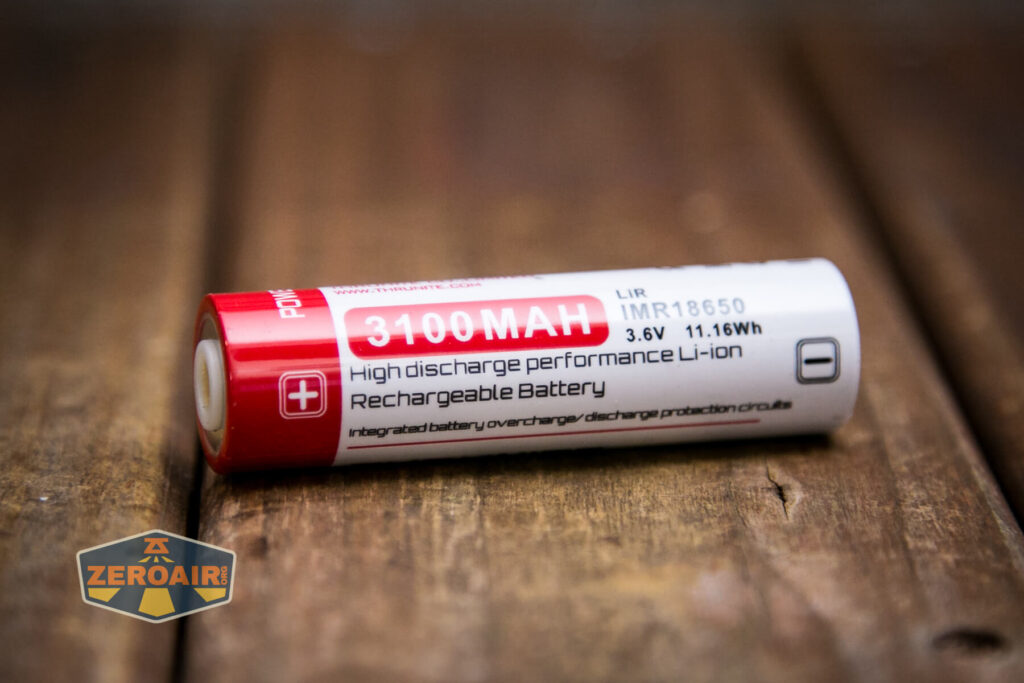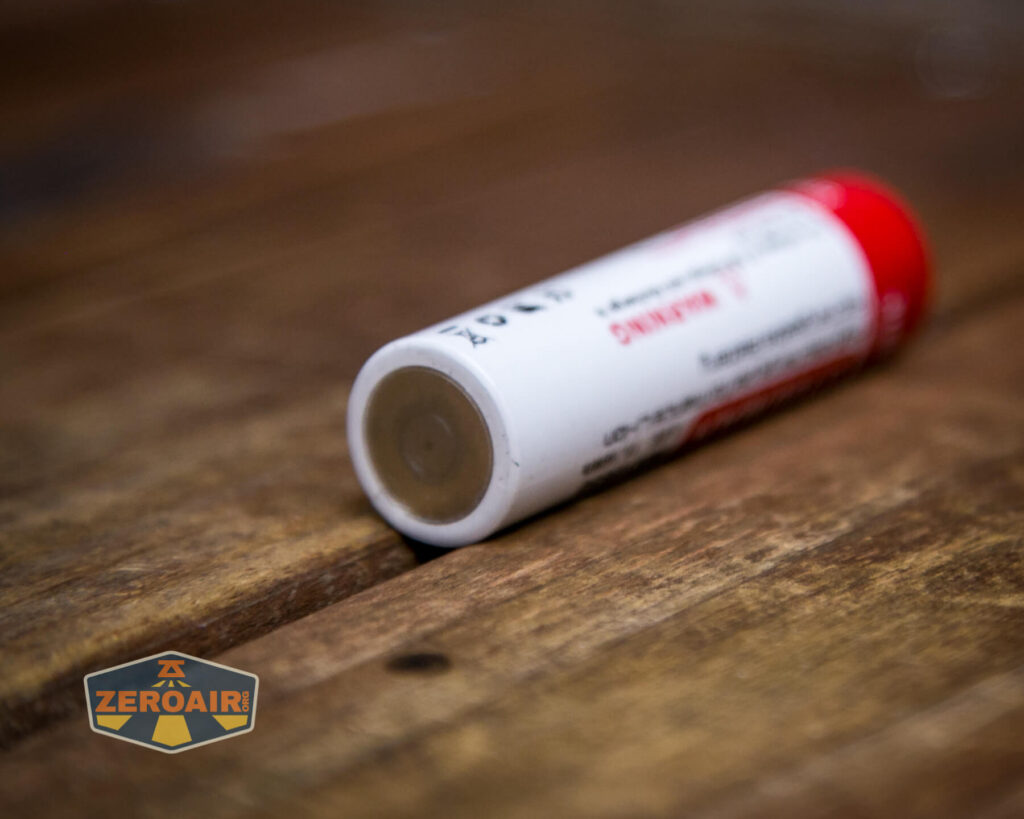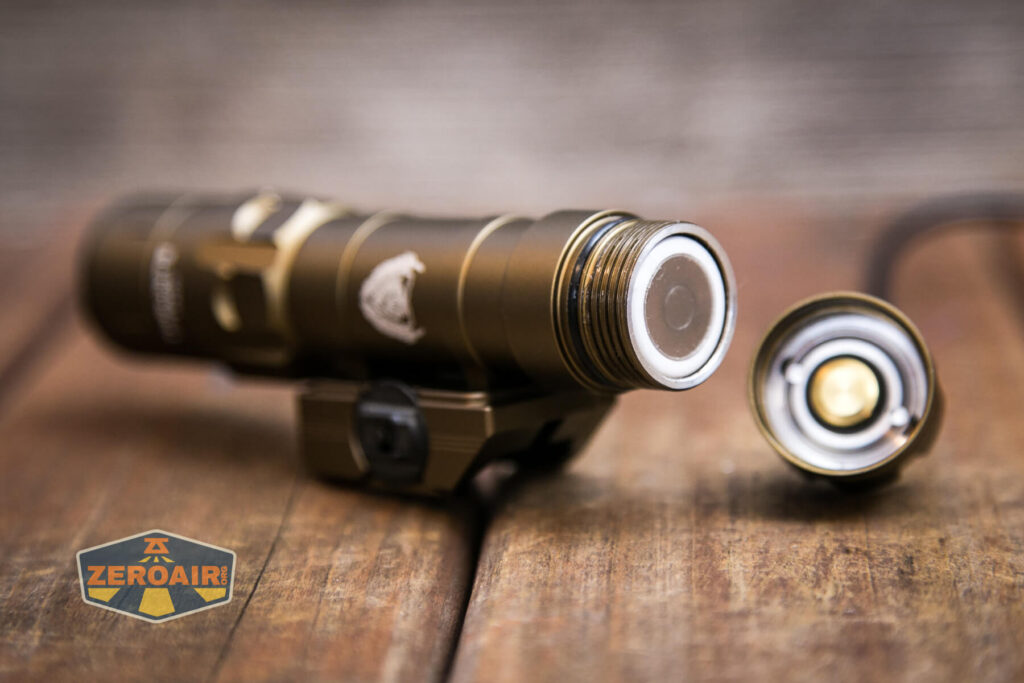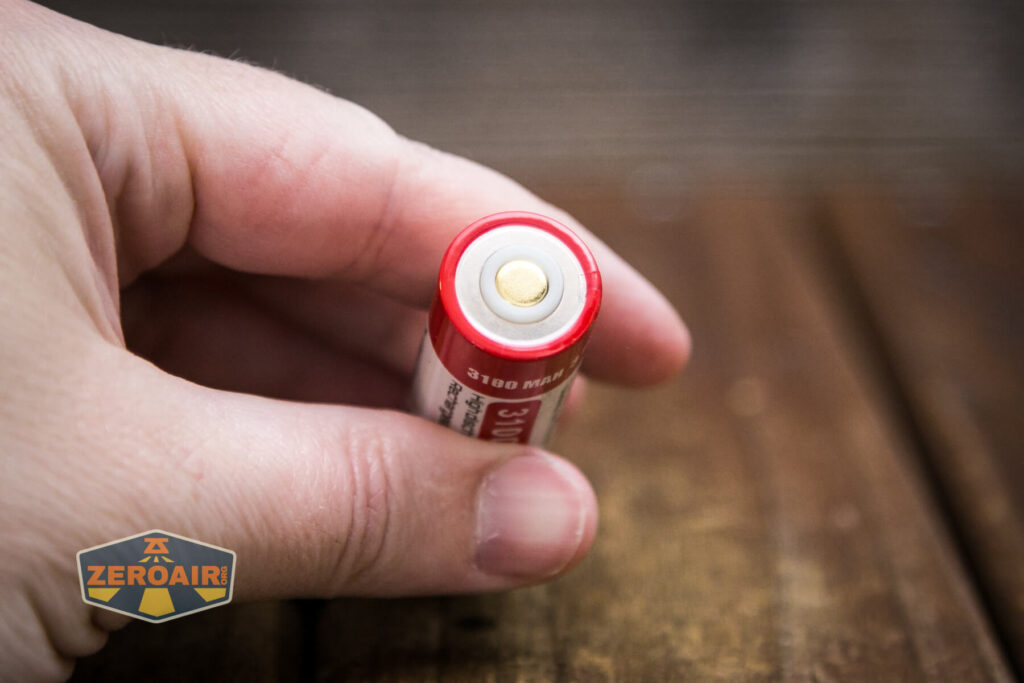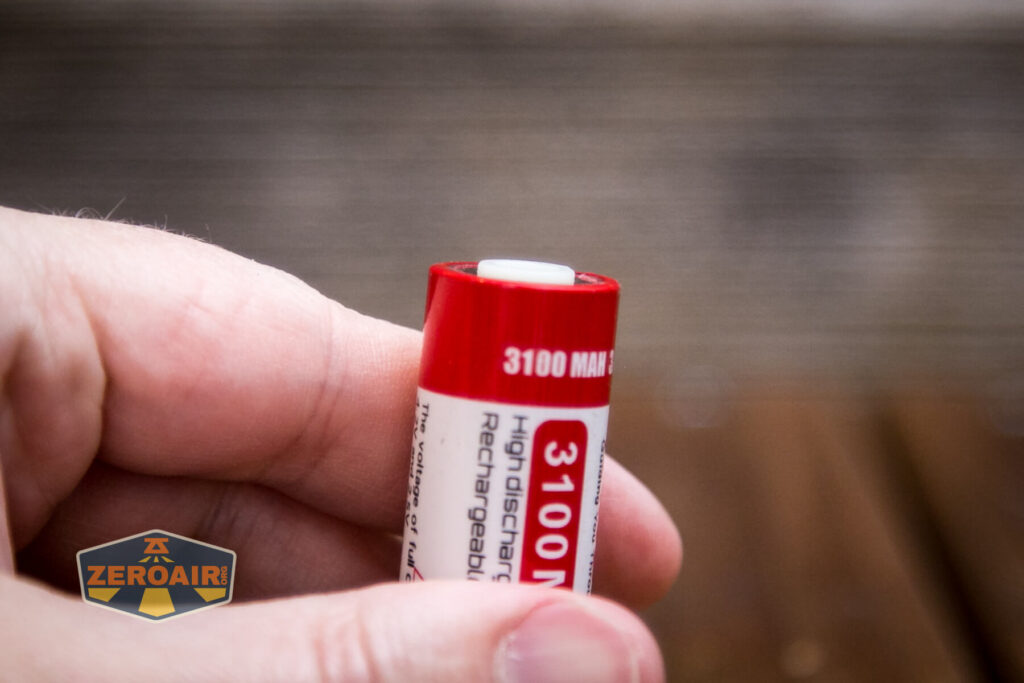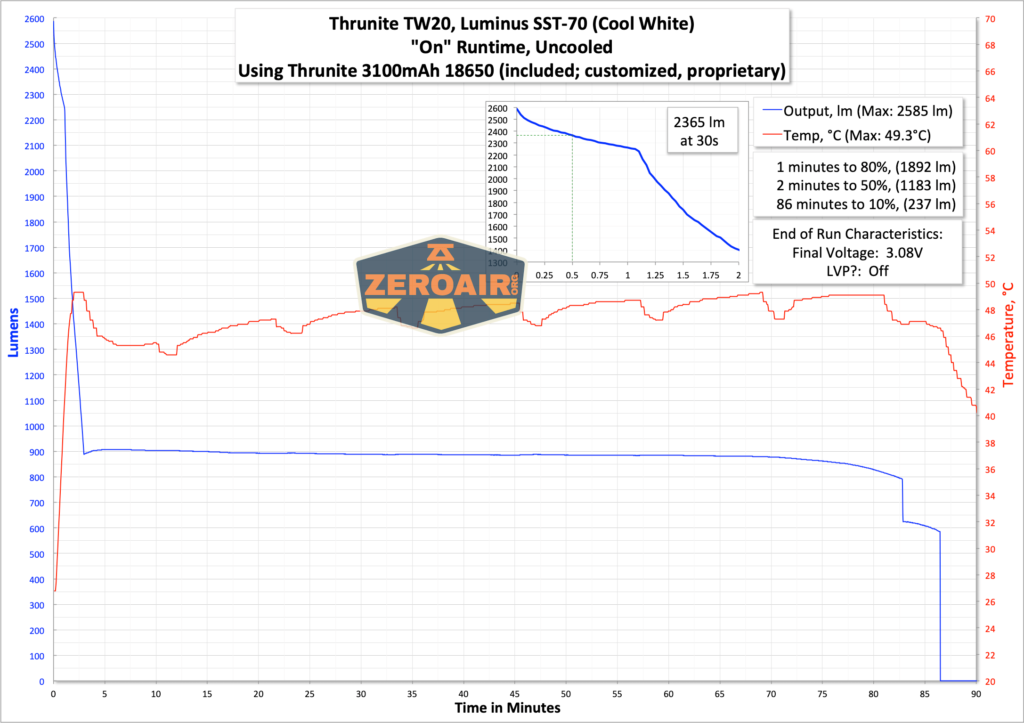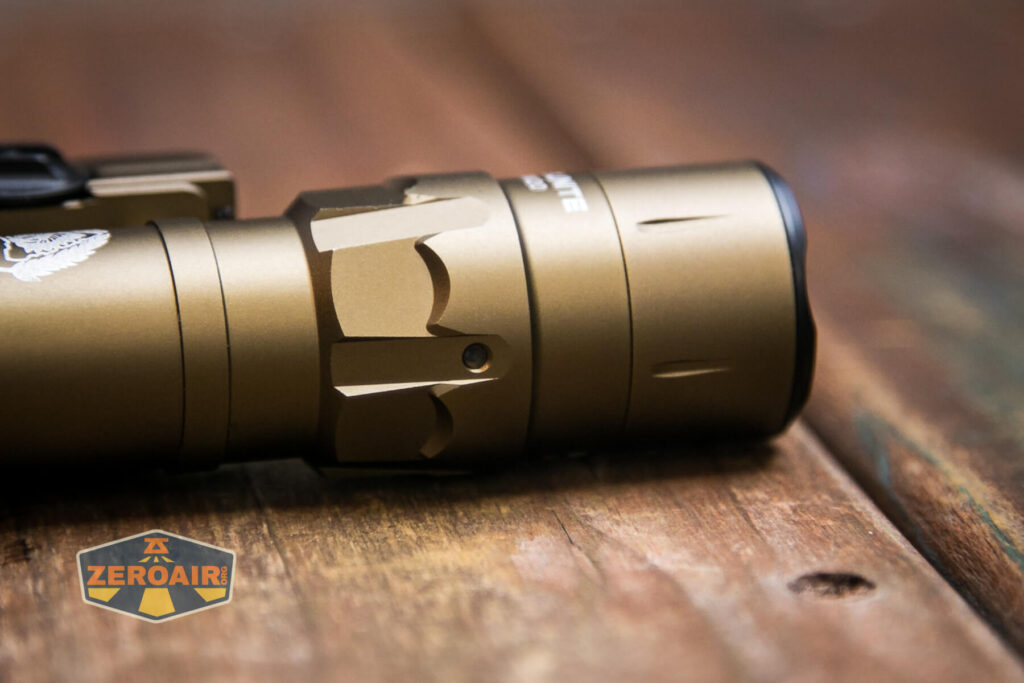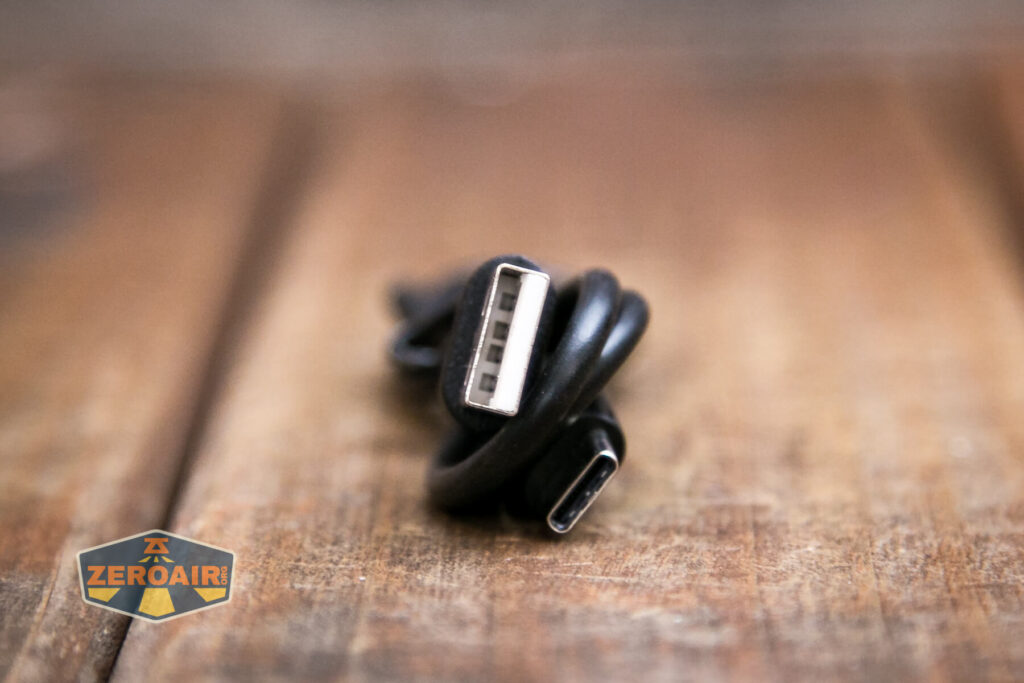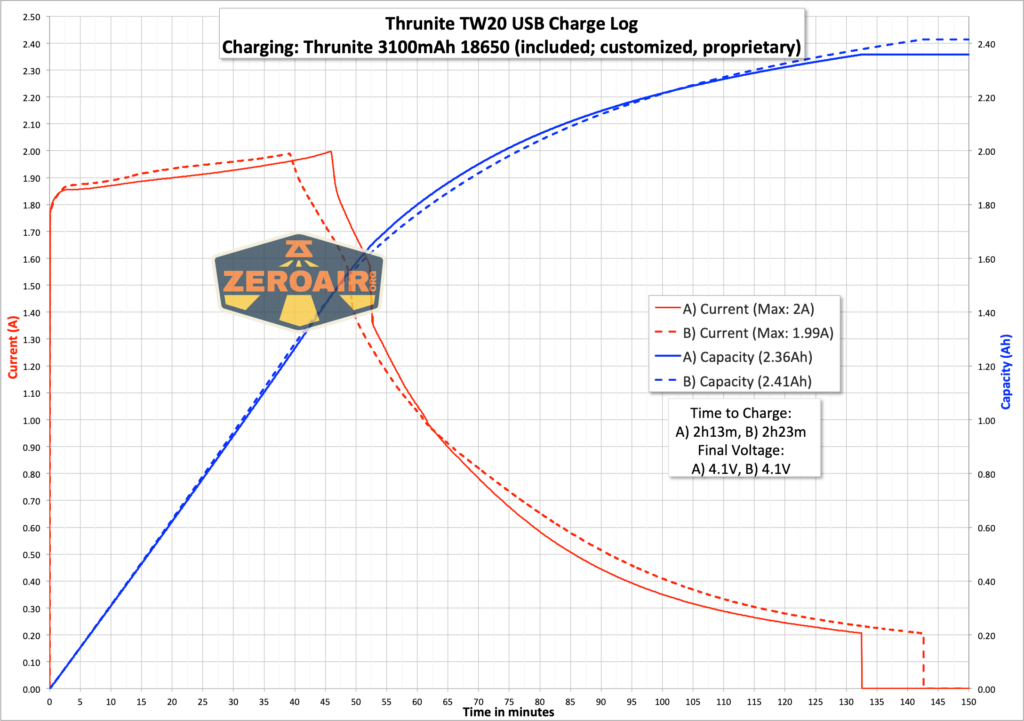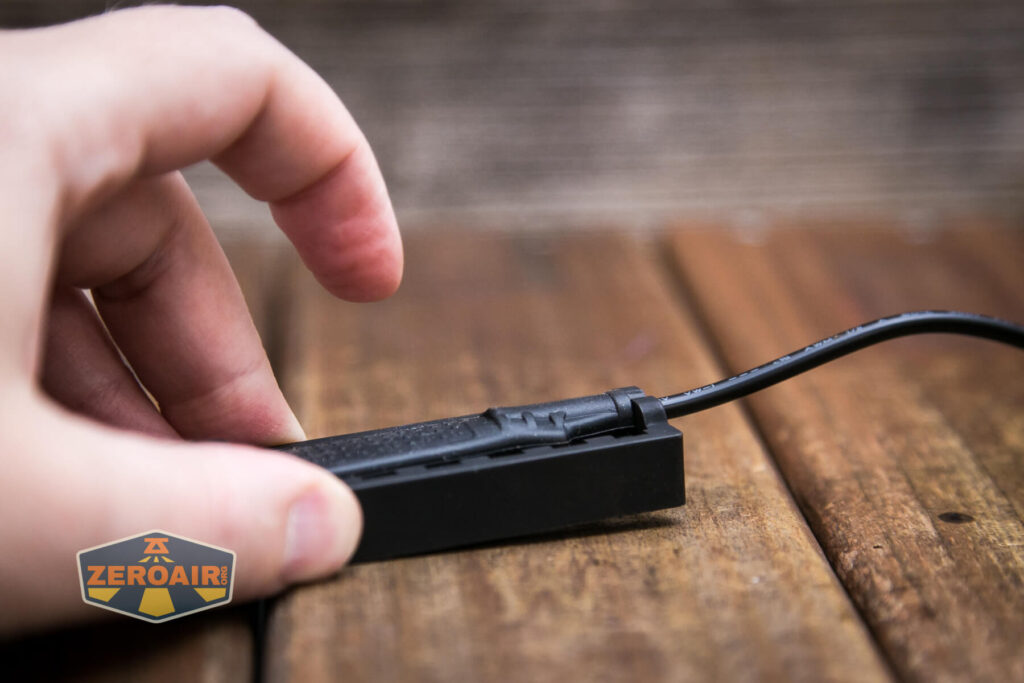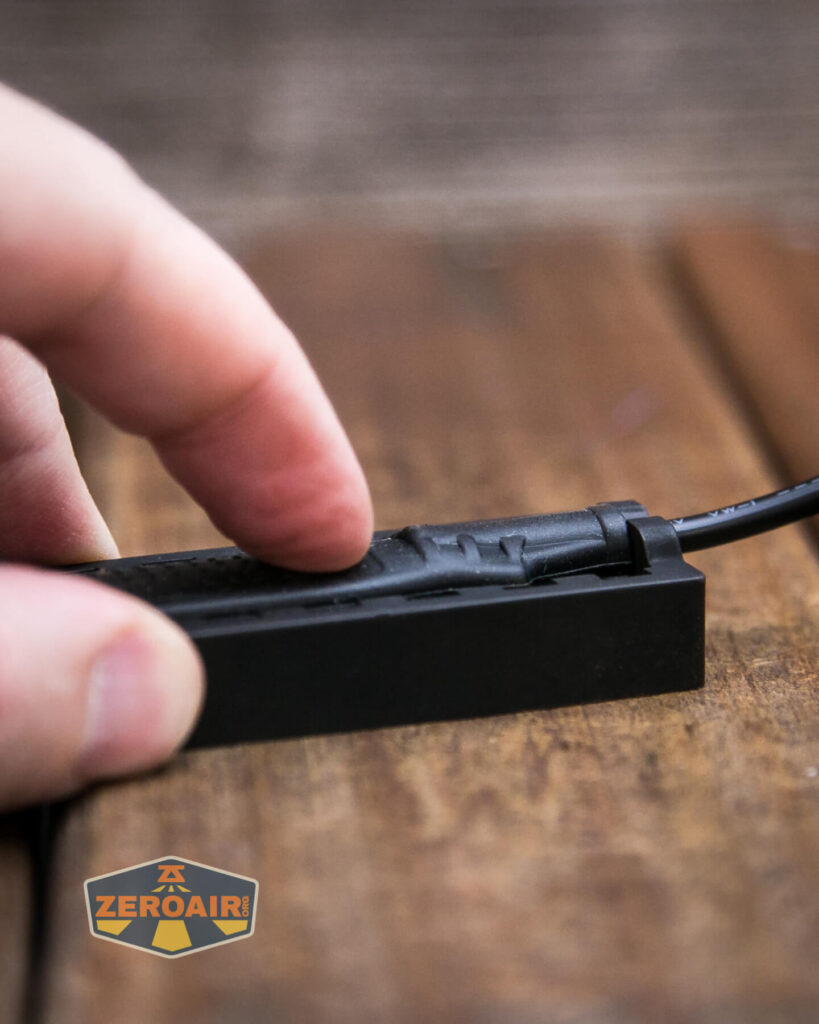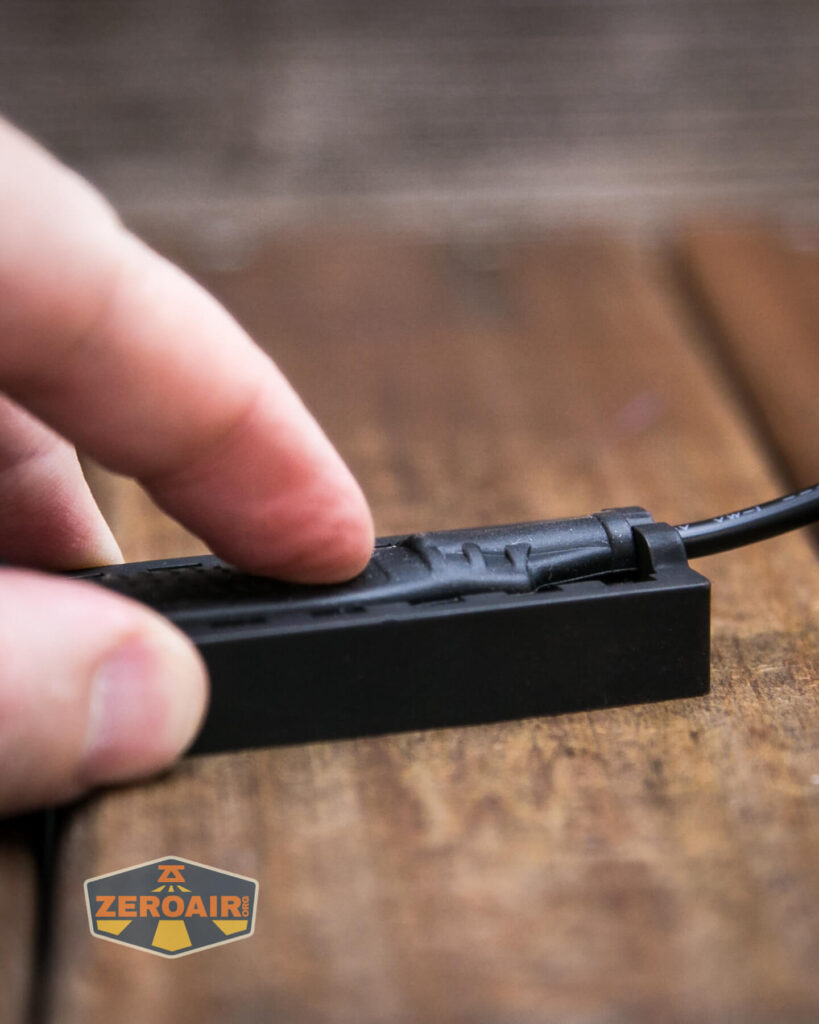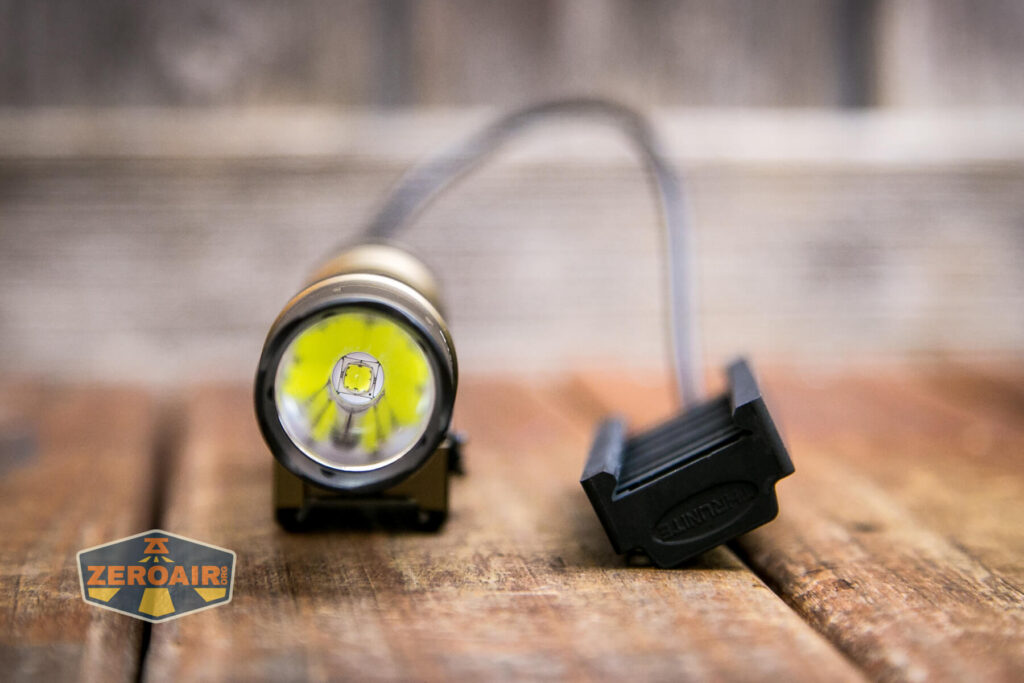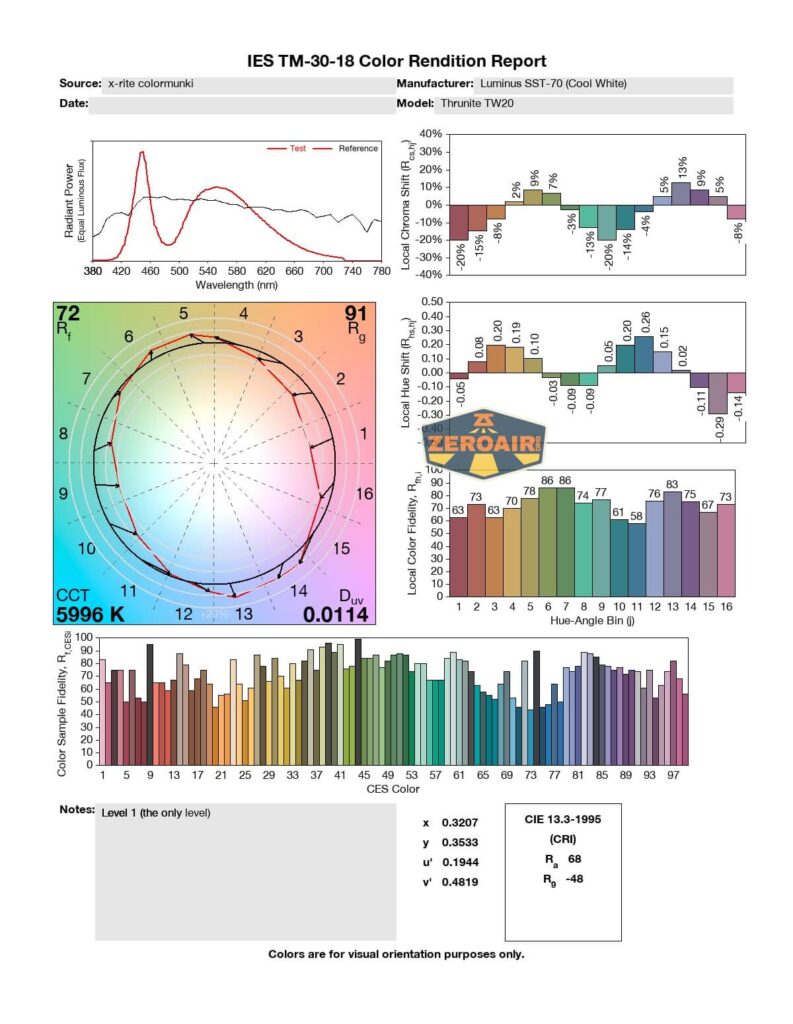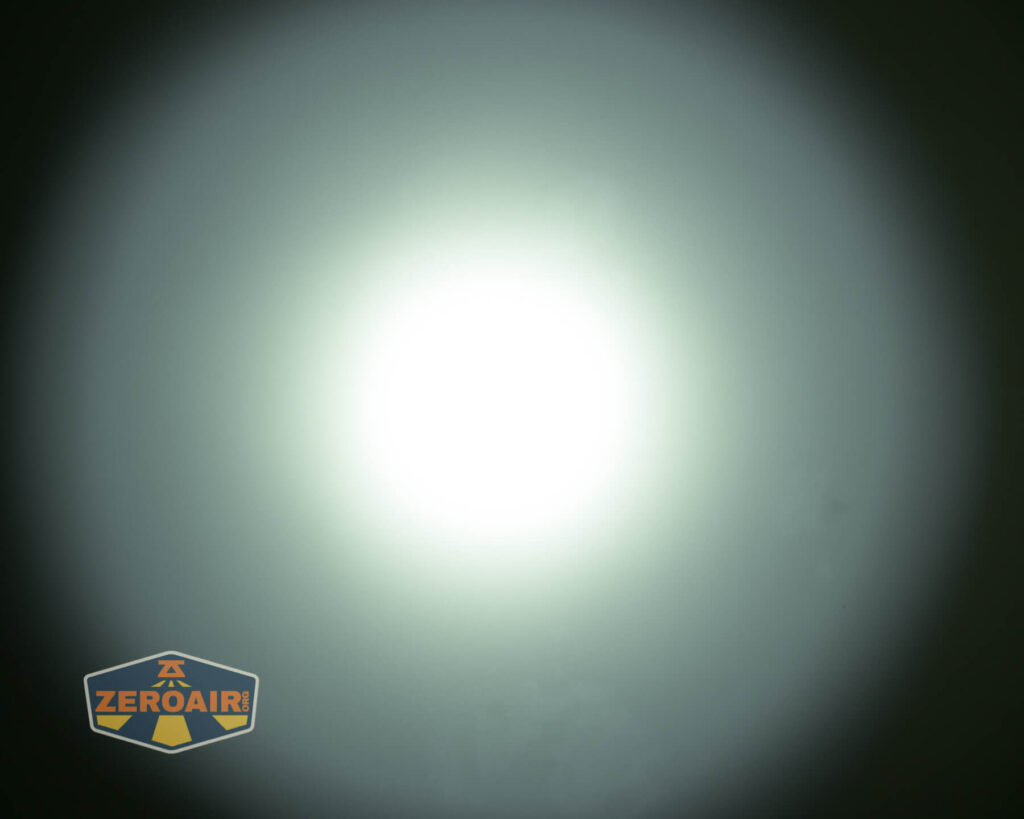Thrunite TW20 Flashlight Review
Thrunite has released the TW20, a dedicated weapon-mount flashlight with one mode and a built-in remote switch. Read for more on this light!
Official Specs and Features
Here’s a link to the Thrunite TW20 flashlight product page.
Versions
There is a black body version and the Desert Tan version seen in this review. As far as I can tell, that’s it!
Price
The black body version goes for $79.95. I imagine the Desert Tan will be that price too.
Short Review
First off, I don’t really use too many weapon-mount flashlights. So my thoughts on the light will be more strictly from a flashlight perspective than anything else. As a flashlight, the single-mode seems to perform well. I like the remote switch – it seems very natural to use. I think the addition of a second mode or another group might be useful. And no strobe on a tactical light is a bit surprising (even if it’s perfectly fine without strobe!)
Long Review
The Big Table
| Thrunite TW20 | |
|---|---|
| Emitter: | Luminus SST-70 (Cool White) |
| Price in USD at publication time: | $79.95 |
| Cell: | 1×18650 |
| Cooled Runtime Graph | Uncooled Runtime Graph |
| LVP? | Yes |
| Switch Type: | E-Switch |
| Quiescent Current (mA): | ? |
| On-Board Charging? | Yes |
| Charge Port Type: | USB-C |
| Charge Graph | |
| Power off Charge Port | With cell, yes. |
| Claimed Lumens (lm) | 2532 |
| Measured Lumens (at 30s) | 2386 (94.2% of claim)^ |
| Candela per Lumen | 5.6 |
| Claimed Throw (m) | 250 |
| Candela (Calculated) in cd (at 30s) | 473lux @ 5.91m = 16521cd |
| Throw (Calculated) (m) | 257.1 (102.8% of claim)^ |
| Claimed CCT | Cool White |
| Measured CCT Range (K) | 6000 Kelvin |
| Item provided for review by: | Thrunite |
| All my Thrunite reviews! | |
^ Measurement disclaimer: Testing flashlights is my hobby. I use hobbyist-level equipment for testing, including some I made myself. Try not to get buried in the details of manufacturer specifications versus measurements recorded here; A certain amount of difference (say, 10 or 15%) is perfectly reasonable.
What’s Included
- Thrunite TW20 flashlight
- Thrunite 3100mAh 18650 (customized, proprietary)
- Charging cable (USB to USB-C)
- Spare o-ring
- Spare charge port cover
- Manual etc
Package and Manual
Build Quality and Disassembly
The build quality seems great. There’s nothing at all bad to say about it.
Note that there is no tailcap replacement that would allow the use of the Thrunite TW20 flashlight as an EDC-style flashlight. Second to that, the mount points on the body aren’t really removable.
The tailcap threads are very smooth. They’re anodized and square-cut, and quite long.
Inside the cell tube you can see that the head has positive and negative contact points. You’ll see that on the cell later, too.
Size and Comps
125mm x 26mm x 40.5mm and 125.5g without the battery.
If the flashlight will headstand, I’ll show it here (usually the third photo). If the flashlight will tailstand, I’ll show that here, too (usually the fourth photo).
Here’s the test light with the venerable Convoy S2+. Mine’s a custom “baked” edition Nichia 219b triple. A very nice 18650 light.
And here’s the light beside my custom engraved TorchLAB BOSS 35, an 18350 light. I reviewed the aluminum version of that light in both 35 and 70 formats.
Retention and Carry
I might say this is “primarily” a weapon light but in this case I think it’s safe to say this is only a weapon light.
Even if you remove those rail mount points, there are still screw holes in the body that are not removable. So it’s a weapon light and only a weapon light. Which is fine – that’s what it is!
This mount comes with a “1913” rail adapter, though it can be swapped. However, the “GL” type is not included.
Also, though I didn’t do it, I think you can remove the whole rail attachment from the light by unscrewing those four hex (or Torx?) screws.
Installing on a weapon is easy, and didn’t require any tools.
The remote switch also comes with an attachment for Picatinny rails.
This attachment doesn’t slide onto the rail, it clips over the rail. Fit is very snug, and it works well!
My rails (maybe all rails, but definitely my rails) have screws that protrude a little into the rail area. So you can see the switch bulging below – it’s because of placement. If placed properly, the switch doesn’t bulge like this. (You can see that later, below.)
Attachment to the rails for the light is very snug, and easy.
Here you can see that screw I was talking about.
Anyway, in reality I think the remote switch is probably supposed to go on the opposite side of the weapon from the light. The cord management works better this way.
And the switch hits right on my fingers when mounted this way, too. Also I can avoid that screw, and thus the bulge. All in all, this worked better for me.
Nothing else is included or intended for carry of the Thrunite TW20 flashlight.
Power and Runtime
Thrunite has “gone Olight” with this cell – I was sure I’ve seen this cell by Thrunite before but I can’t find the post with a quick search. I call this a “customized, proprietary” cell – it’s an 18650 cell with the negative terminal exposed around the positive. Also the positive is shrouded by plastic.
It’s not ideal from a consumer standpoint as far as buying replacement cells, but it’s probably ideal for weapon lights since this setup potentially maintains contact during recoil and will prevent the light from flipping off while firing.
The cell goes into the light with the positive terminal toward the head.
Here are a couple of looks at the plastic shroud.
There’s just one mode, but here are a couple of runtime tests. While the initial output is the same for cooled vs uncooled, the uncooled sustained output is slightly lower than cooled. This also affects the runtime, in that the cooled test is shorter.
Both tests demonstrate low voltage protection.
Charging
Thrunite uses a USB-C charging port on the TW20 flashlight. The charging port is on the head.
Opposite to the charging port is a charging indicator.
An appropriate charging cable is included – USB to USB-C.
Charging is respectable at around 2A, and quick at just over 2 hours.
Despite a USB to USB-C cable being included, C to C does work. The profile looks about the same either way.
While charging, the indicator is red. When charging is complete, this red indicator goes to blue.
Pulse Width Modulation
The single mode does not use PWM.
Here you can see a “baseline” – a chart with almost no light hitting the sensor.
Then there’s the Ultrafire WF-602C flashlight, which has some of the worst PWM I’ve seen. It’s so bad that I used a post about it to explain PWM! Here are multiple timescales (10ms, 5ms, 2ms, 1ms, 0.5ms, 0.2ms) to make comparing this “worst” PWM light to the test light easier. That post also explains why I didn’t test the WF-602C at the usual 50us scale.
User Interface and Operation
All that’s included for the Thrunite TW20 flashlight is a remote switch. There’s no secondary tailcap that adds a mechanical clicky or anything. But again, this is a dedicated weapon-mount light, so this is reasonable.
The whole dimpled pad is clickable – I would guess there are three e-switches under there. But they all do the same thing, so it’s a very consistent experience no matter where you click.
Here’s a user interface table!
| State | Action | Result |
|---|---|---|
| Off | Click | On |
| On | Click | Off |
| Off | Hold ~2s | Momentary On |
LED and Beam
In the Thrunite TW20 flashlight is a Luminus SST-70 emitter. That emitter is surrounded by a deep and smooth reflector.
This setup provides a nice tight hotspot with reasonable spill.
LED Color Report (CRI and CCT)
With an unsurprising claim of “Cool White” like we’d expect on a tactical flashlight, we actually see something in the 6000K range. The CRI is low at around 68.
Beamshots
These beamshots always have the following settings: f8, ISO100, 0.3s shutter, and manual 5000K exposure. These photos are taken at floor level, and the beam hits the ceiling around 9 feet away.
Tint vs BLF-348 (KillzoneFlashlights.com 219b version) (affiliate link)
I keep the test flashlight on the left and the BLF-348 reference flashlight on the right.
I compare everything to the KillzoneFlashlights.com 219b BLF-348 because it’s inexpensive and has the best tint!
Conclusion
What I like
- Good build quality
- Dedicated weapon mount
- Nice and quick charging
- USB-C charging (and C to C works)
- Great output even after the stepdown
What I don’t like
- Just one mode
- No strobe (great for me, but I imagine operators will want to know this)
Notes
- This content originally appeared at zeroair.org. Please visit there for the best experience!
- For flashlight-related patches, stickers, and gear, head over to PhotonPhreaks.com!
- Please use my amazon.com referral link to help support zeroair.org!
- Please support me on Patreon! I deeply appreciate your support!
